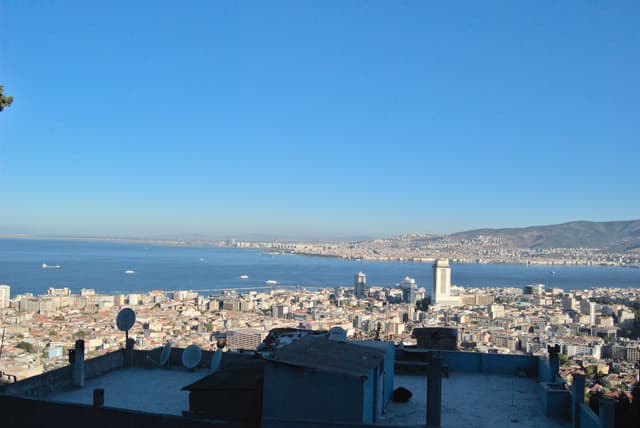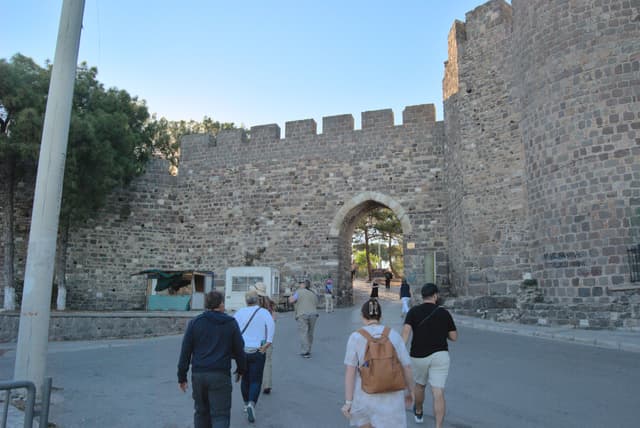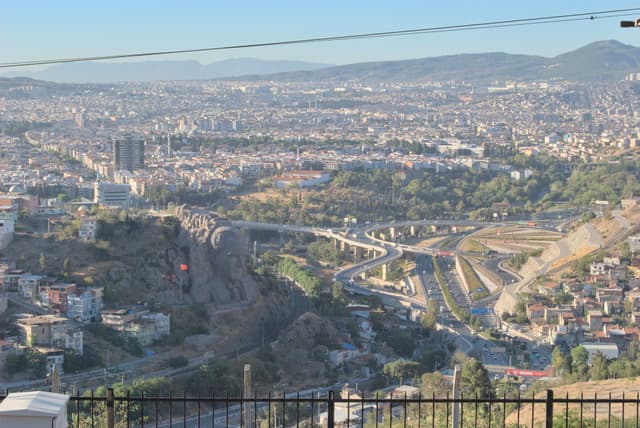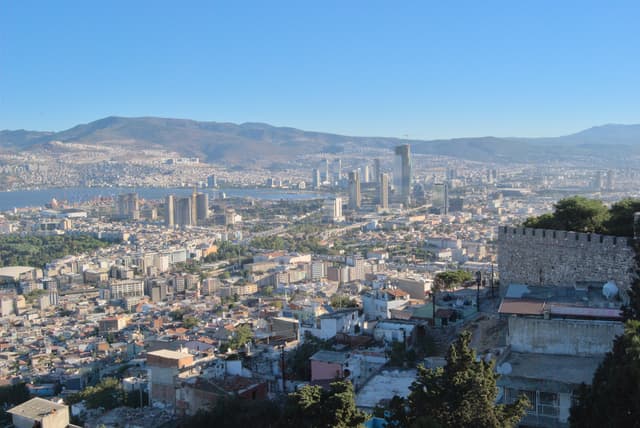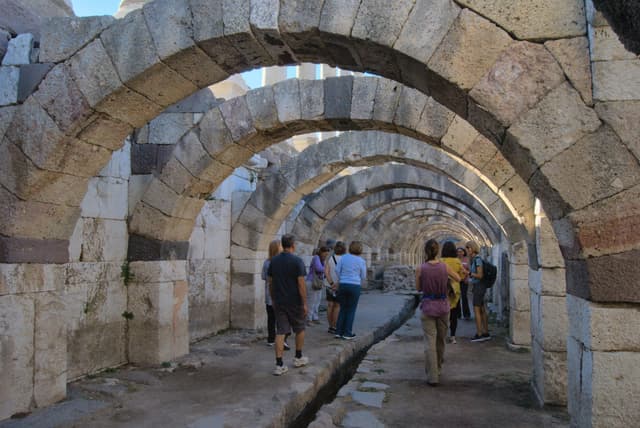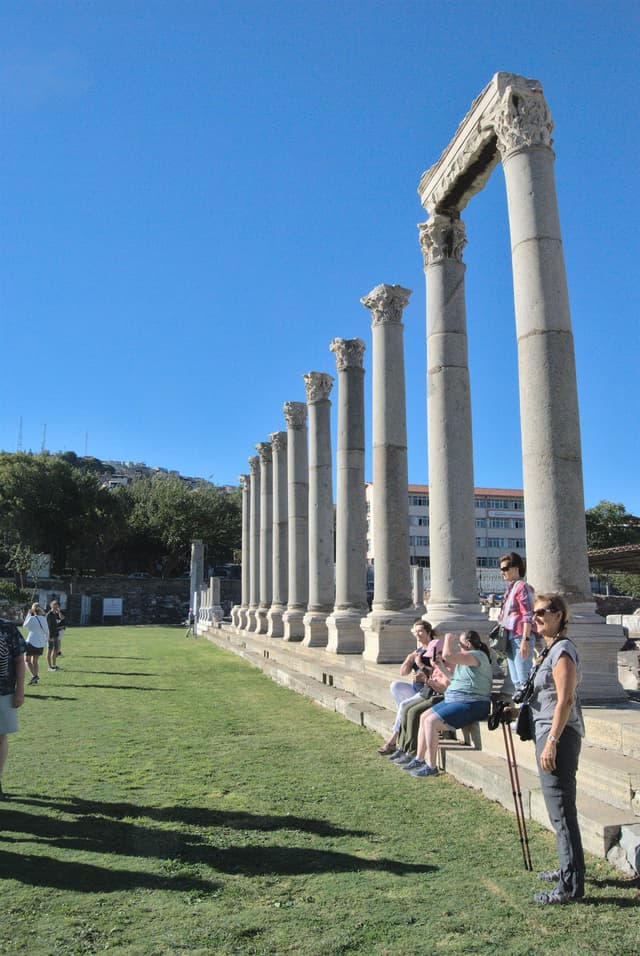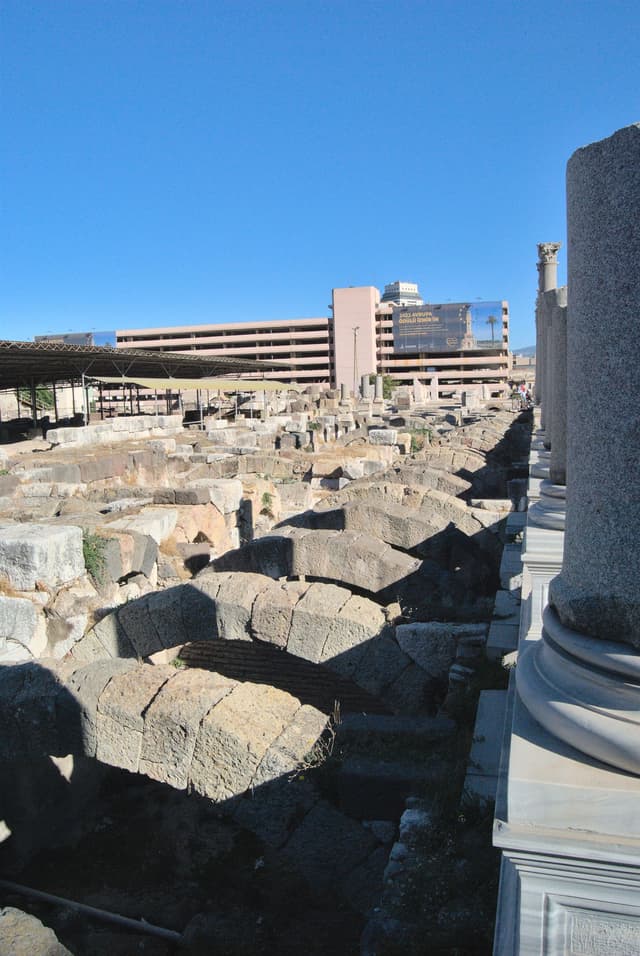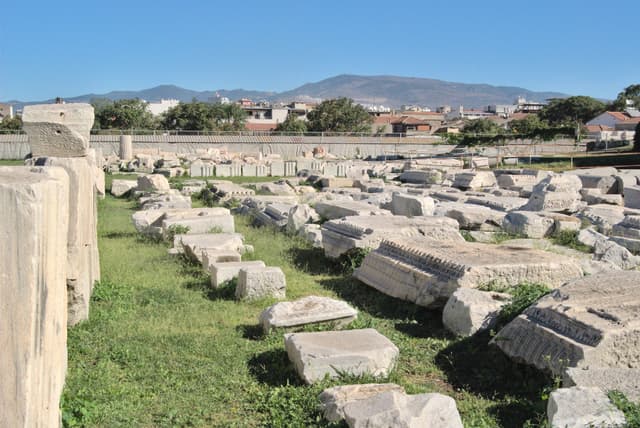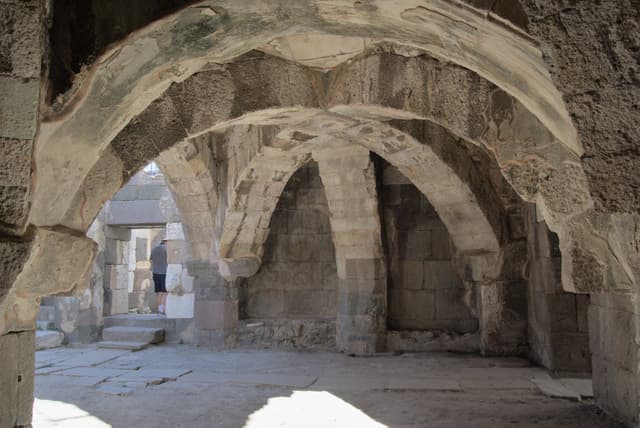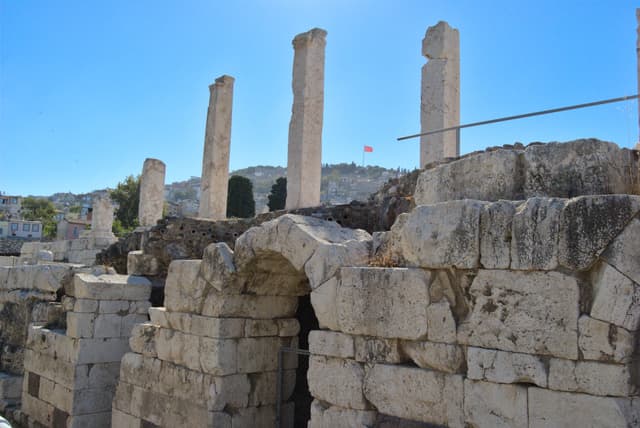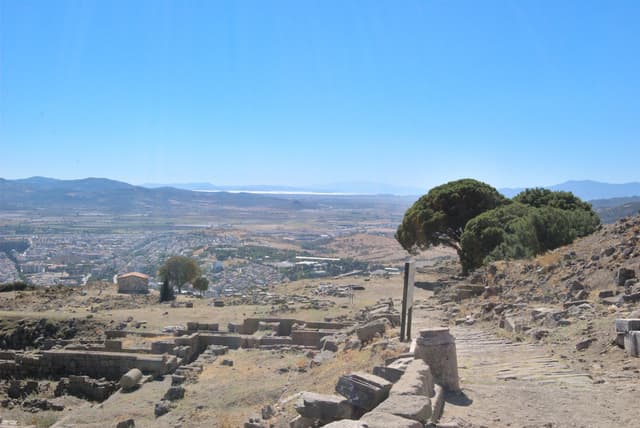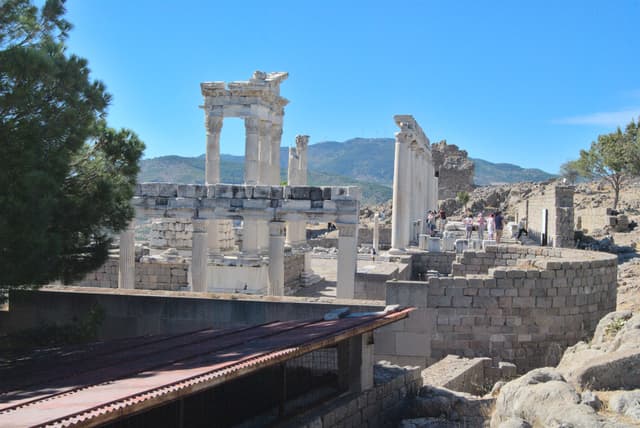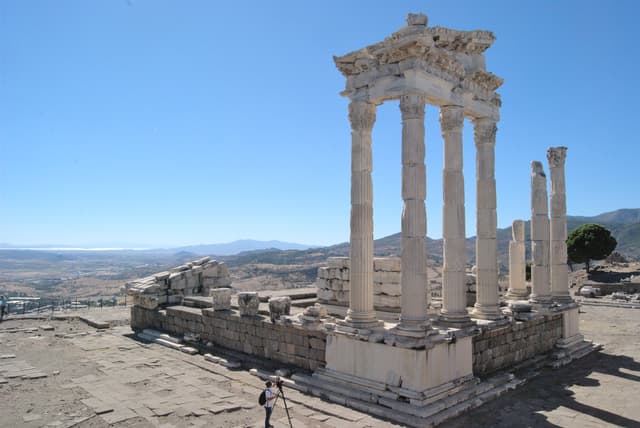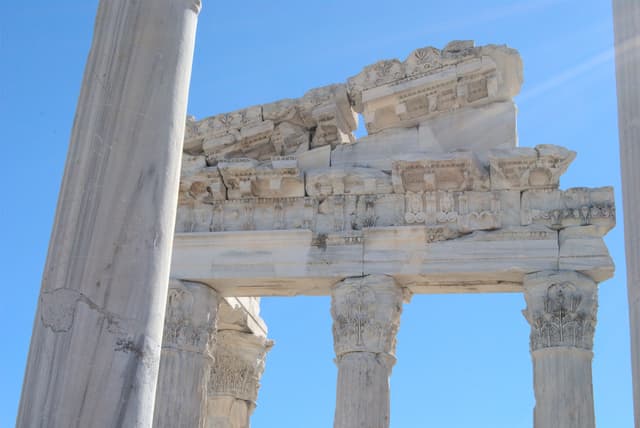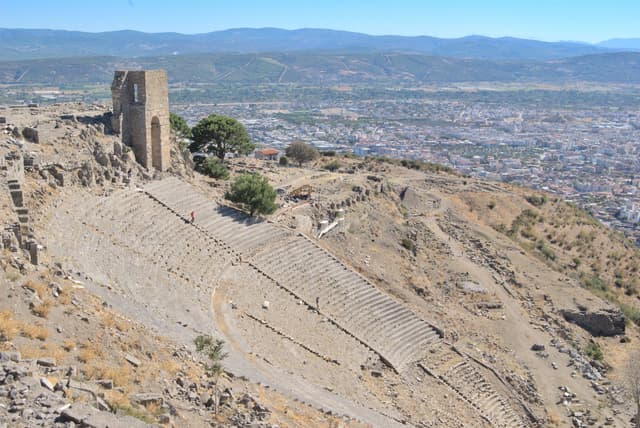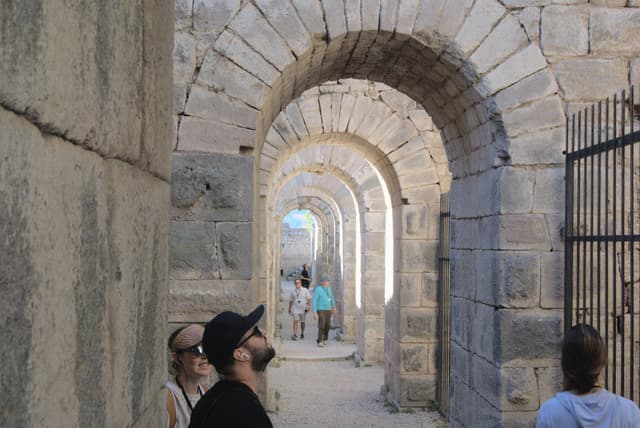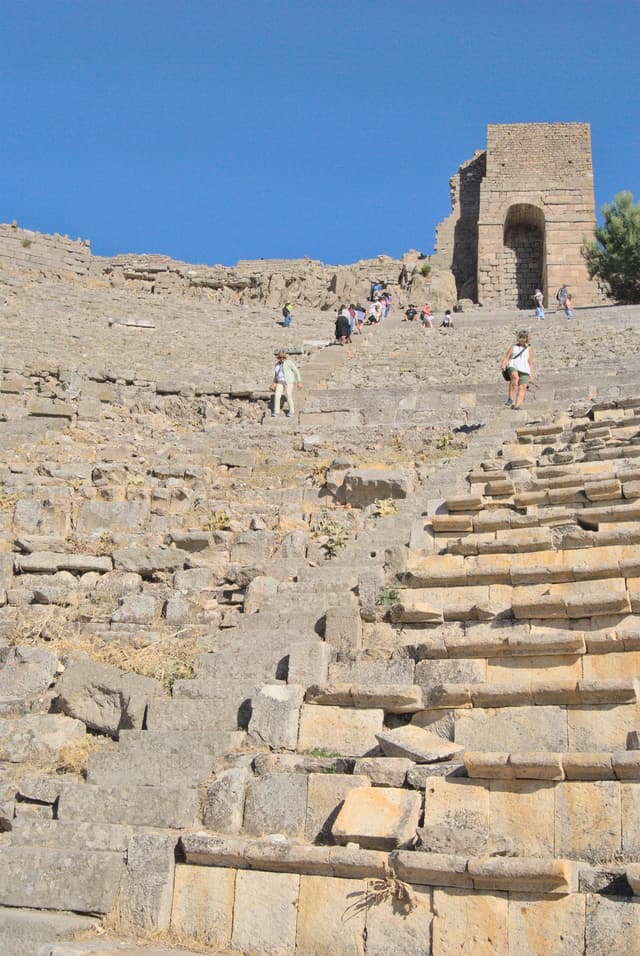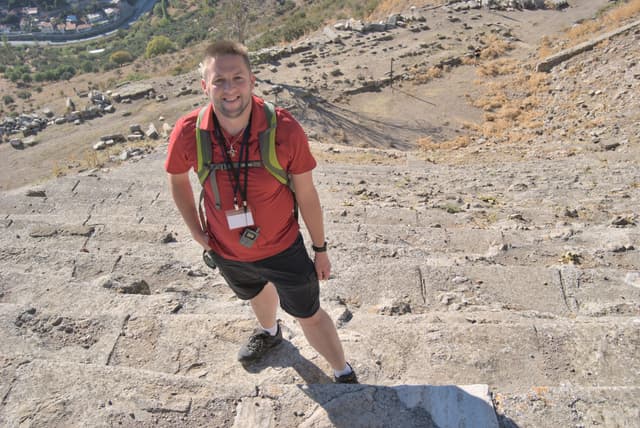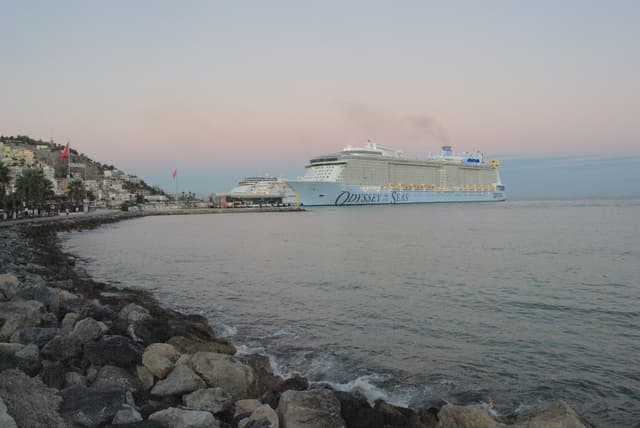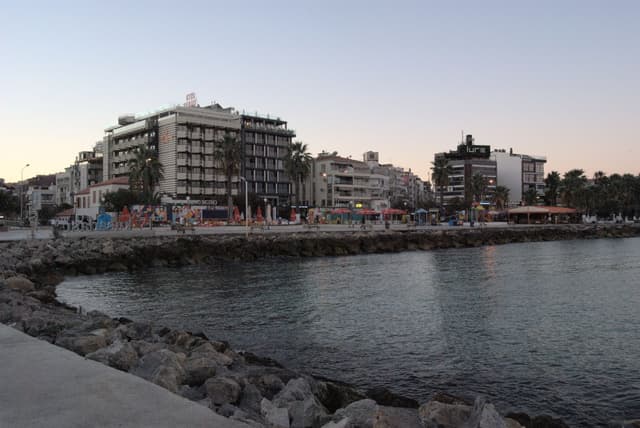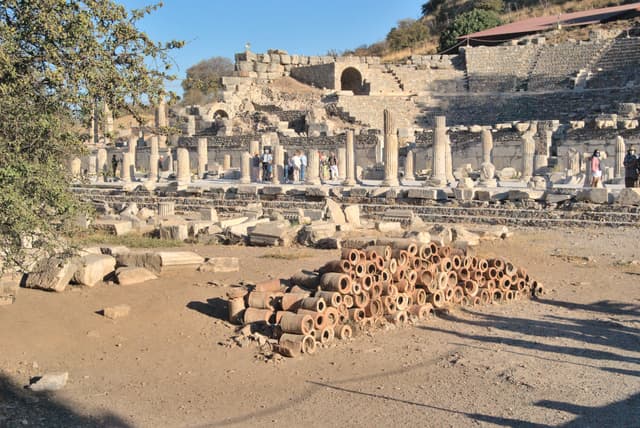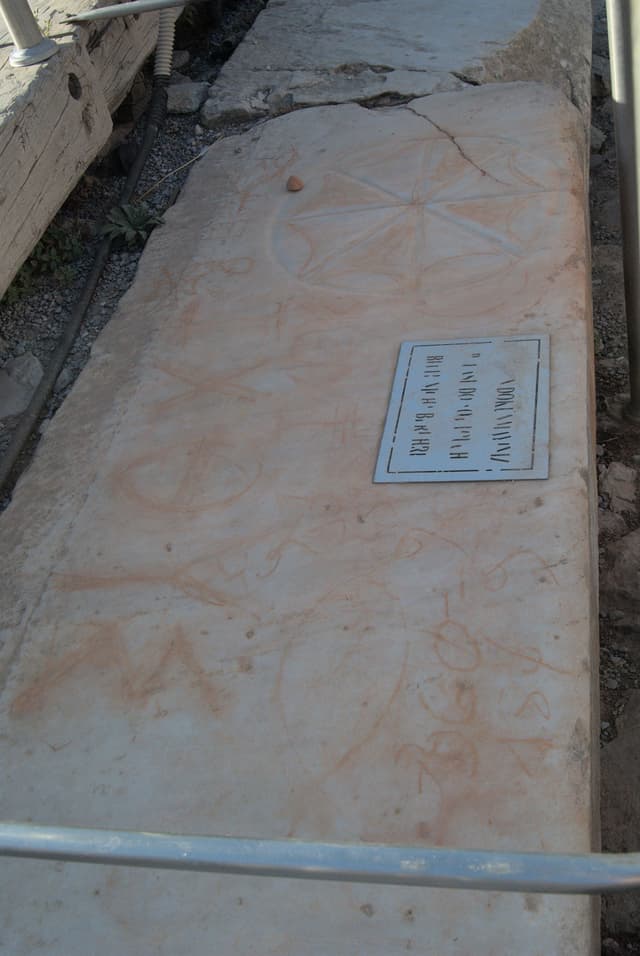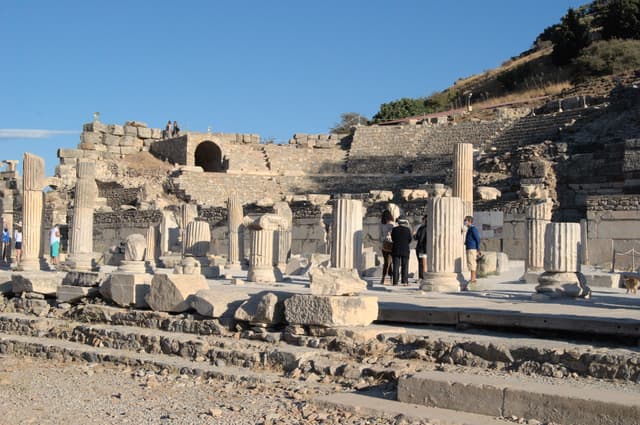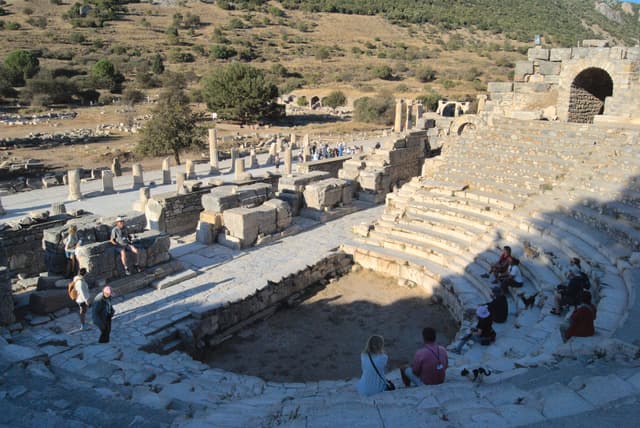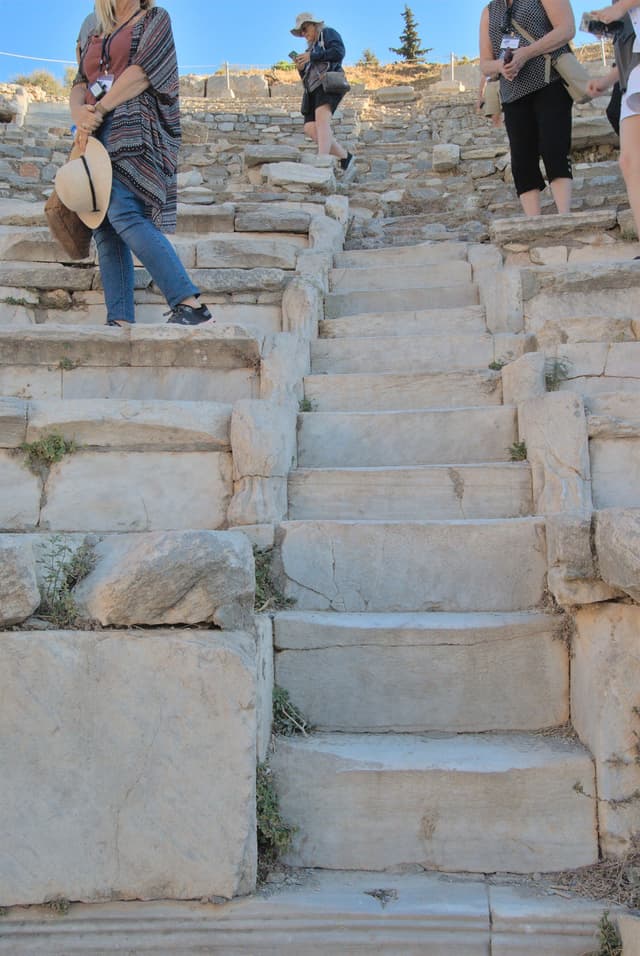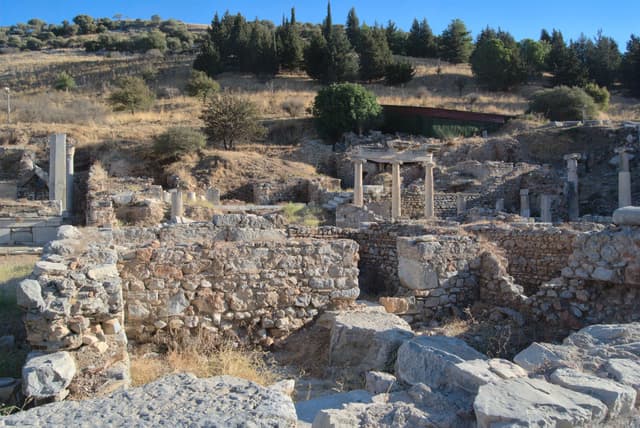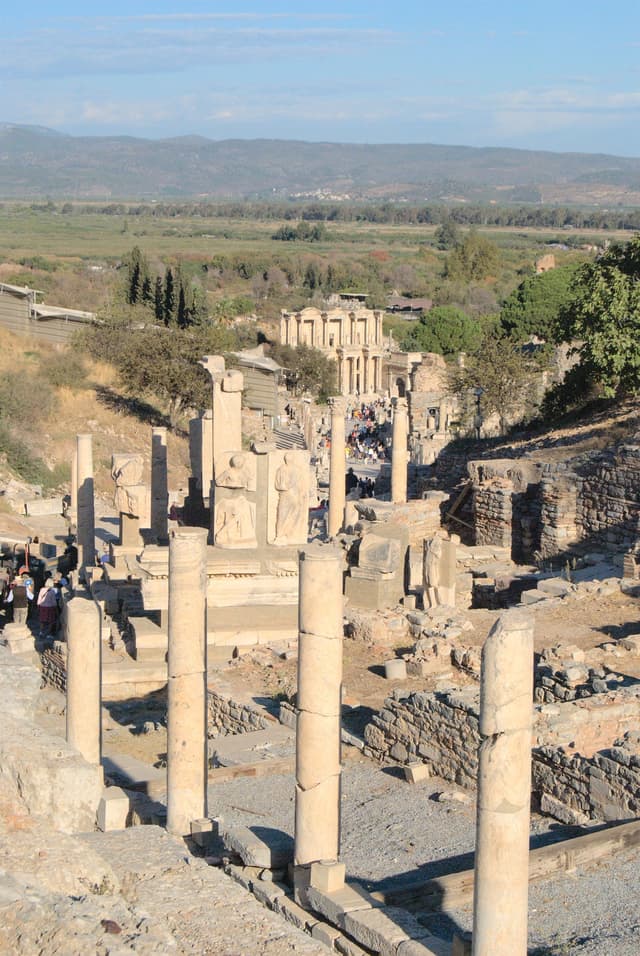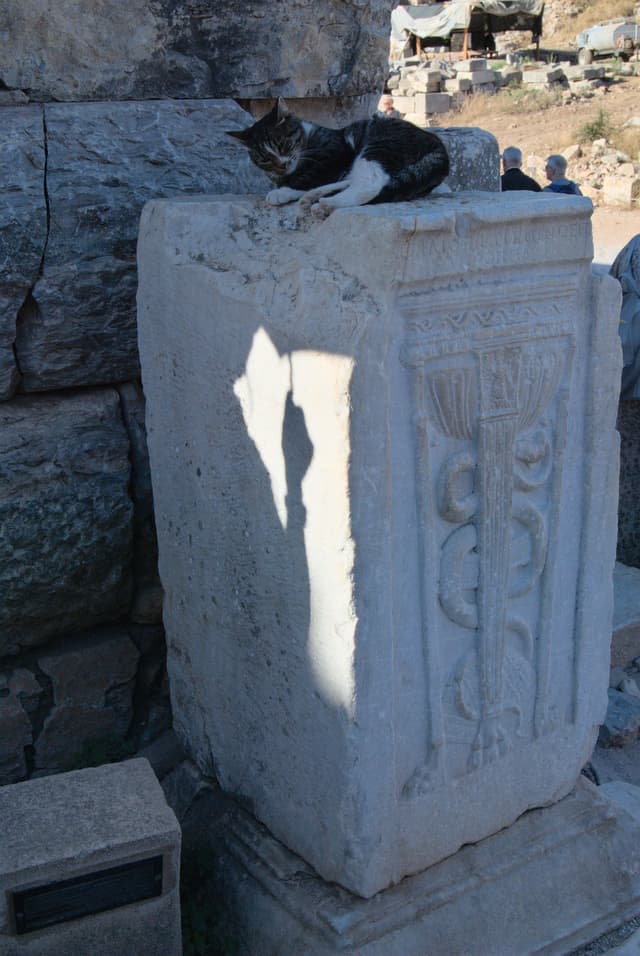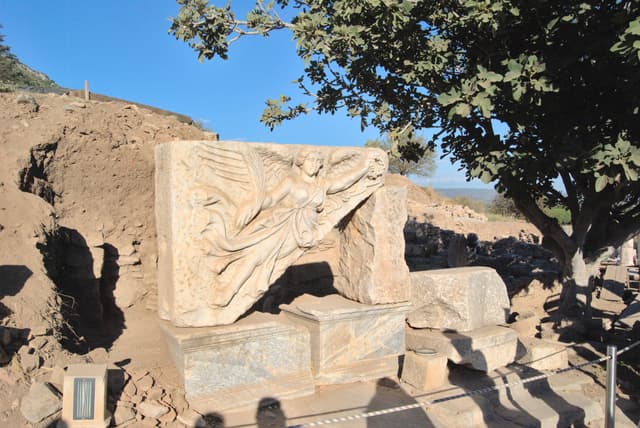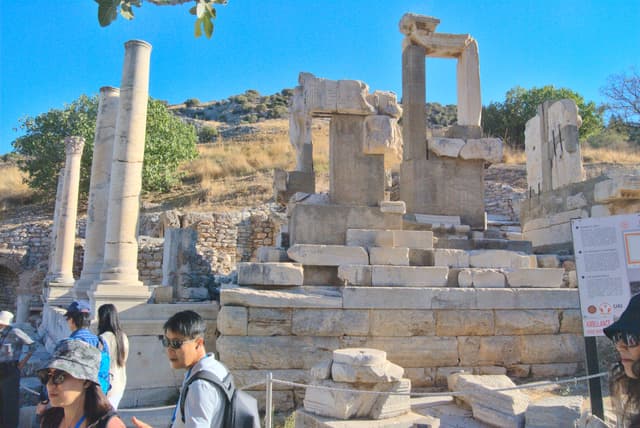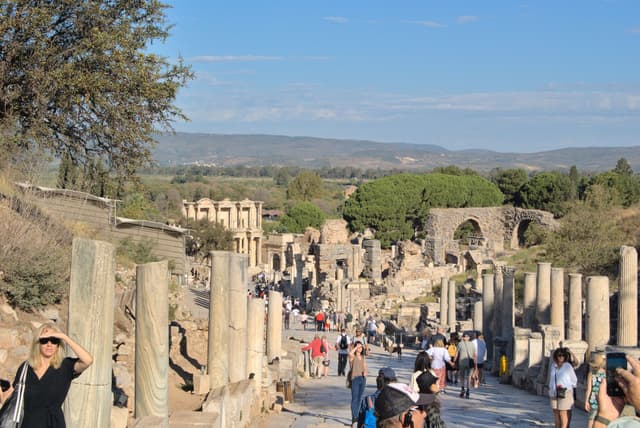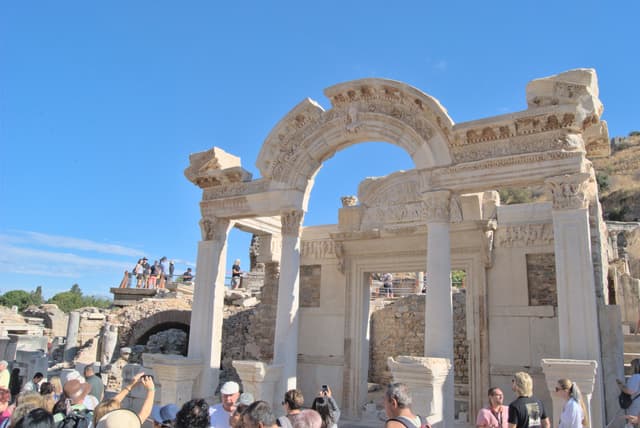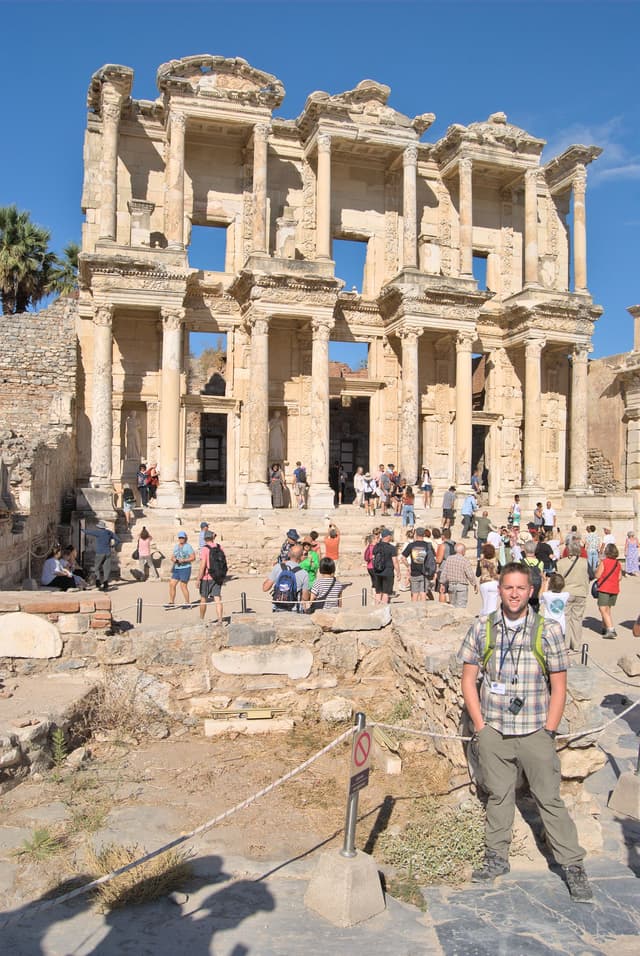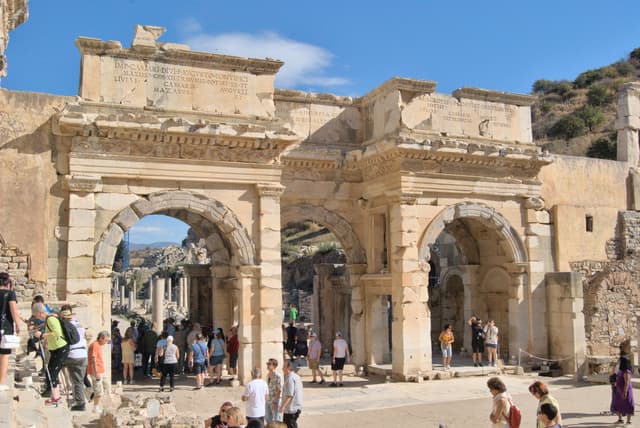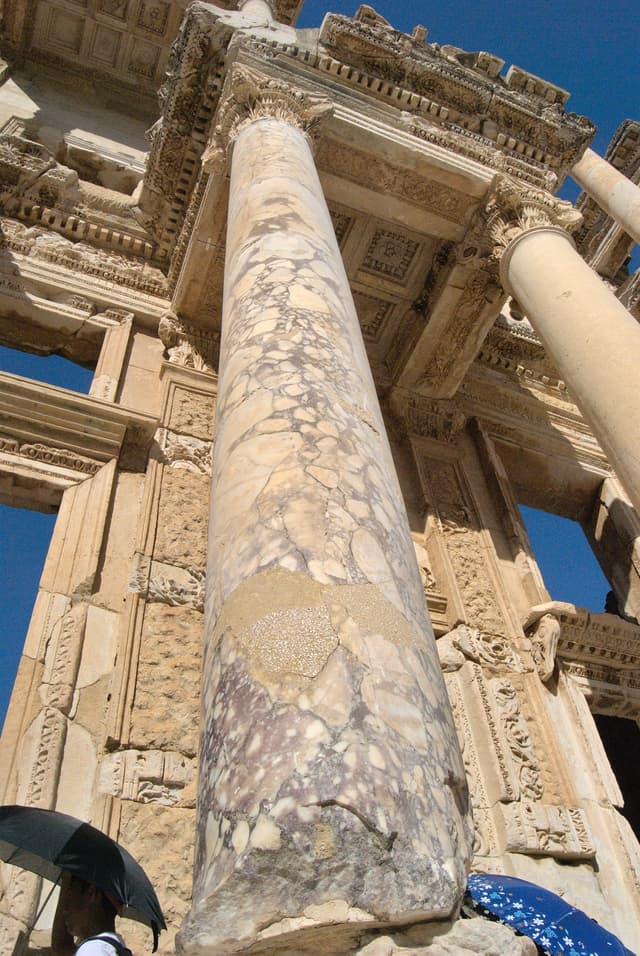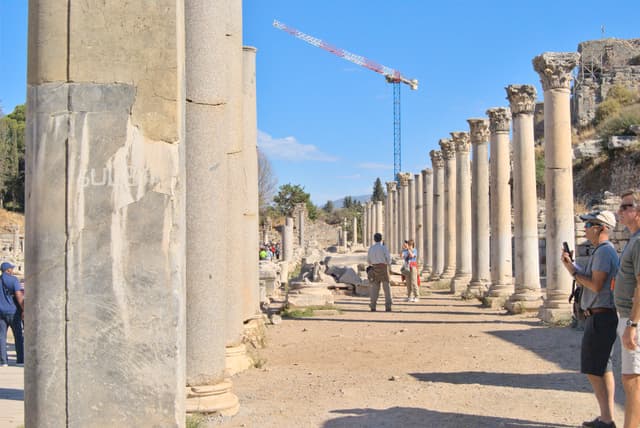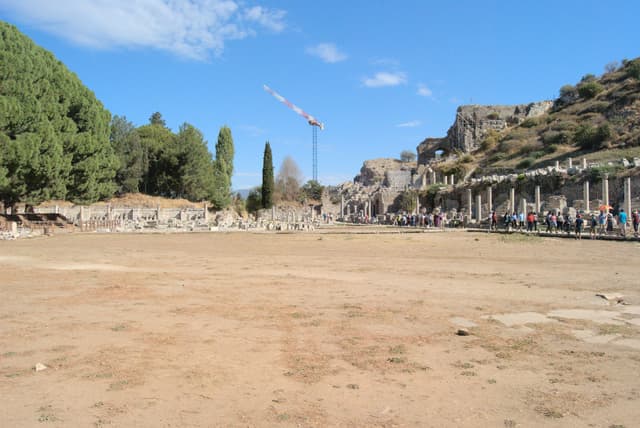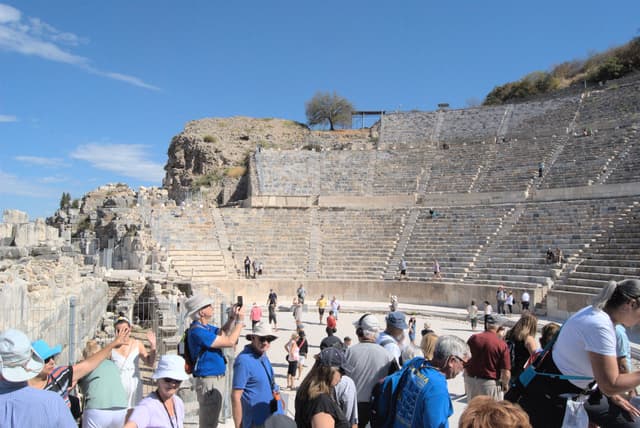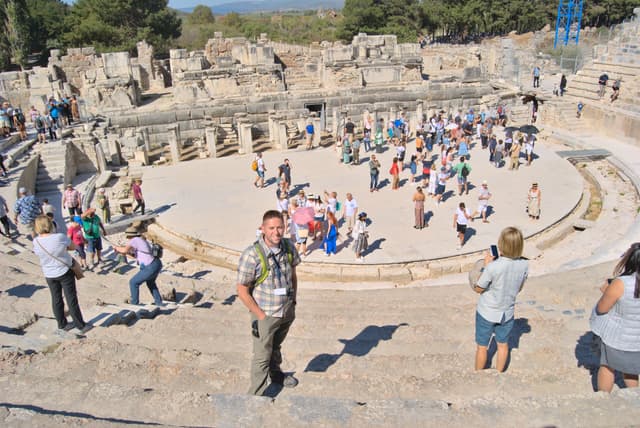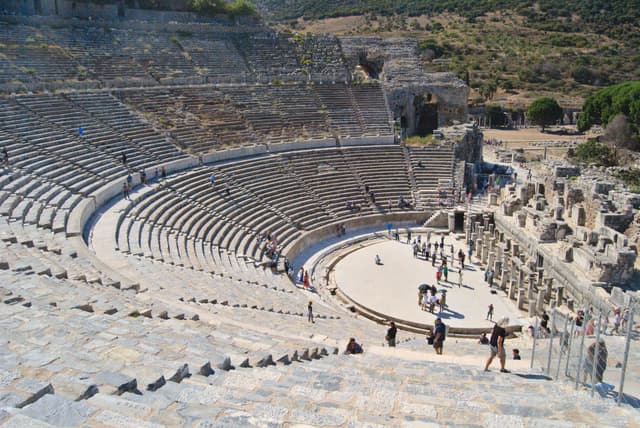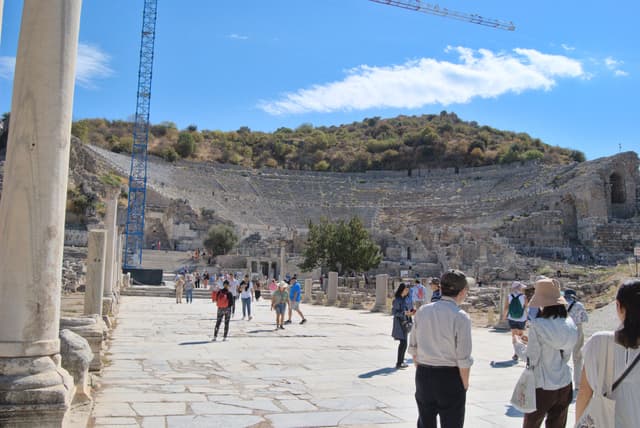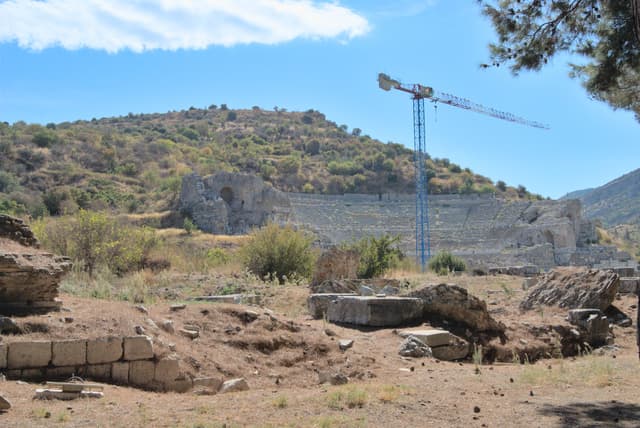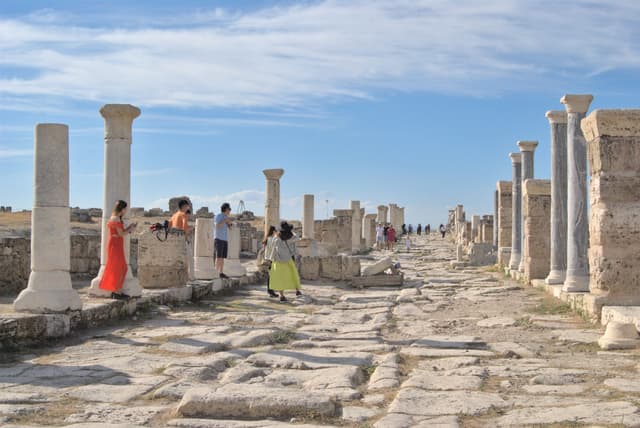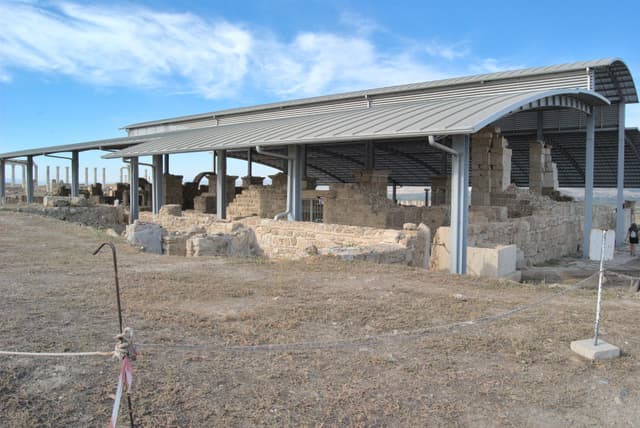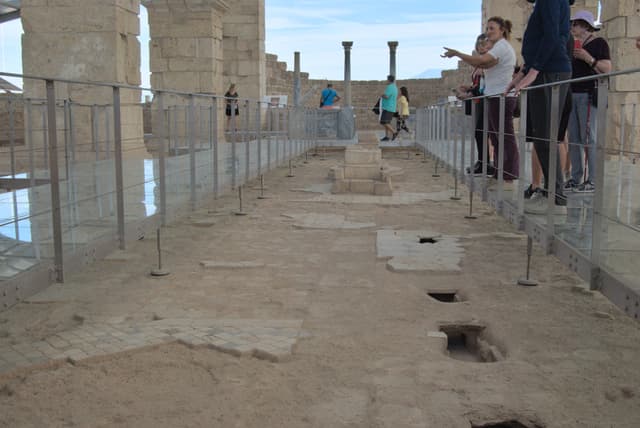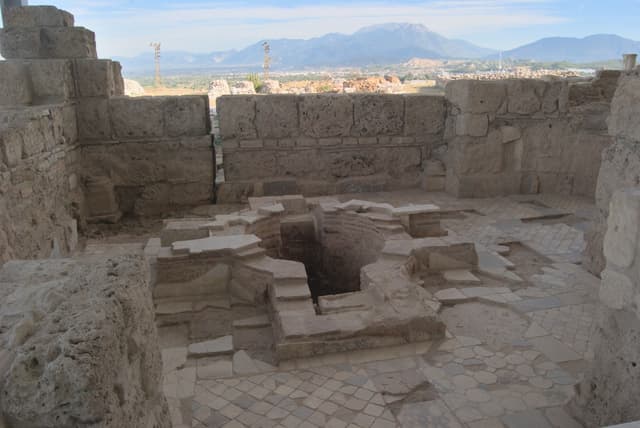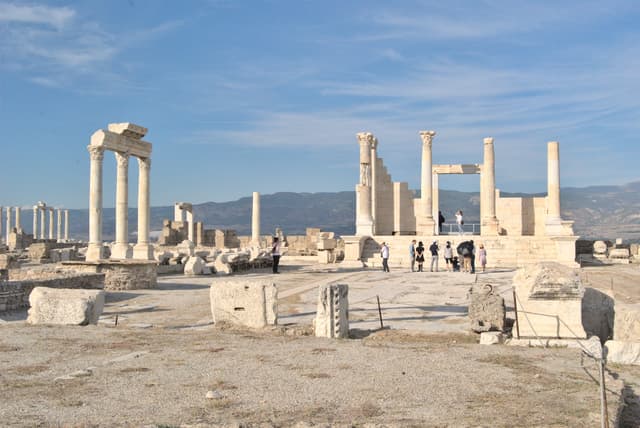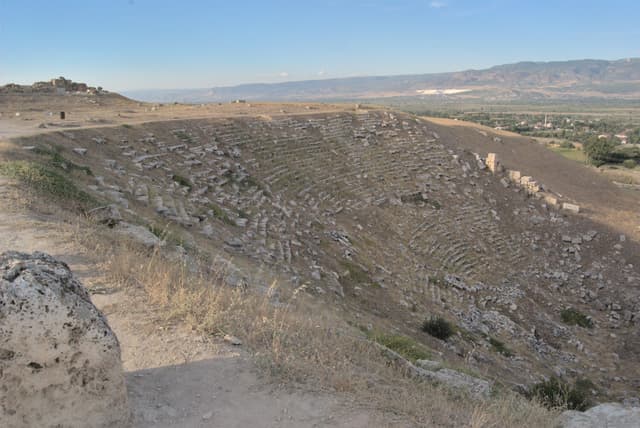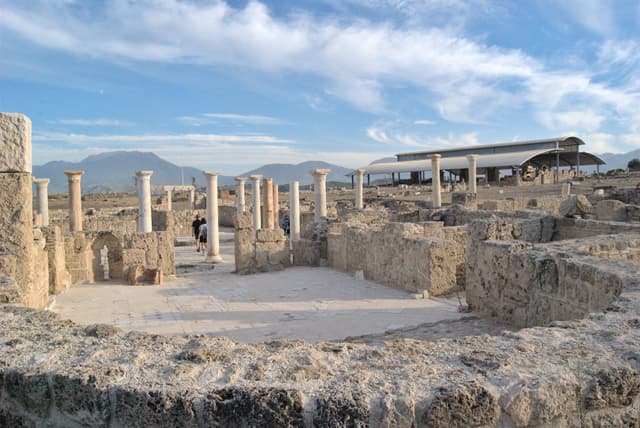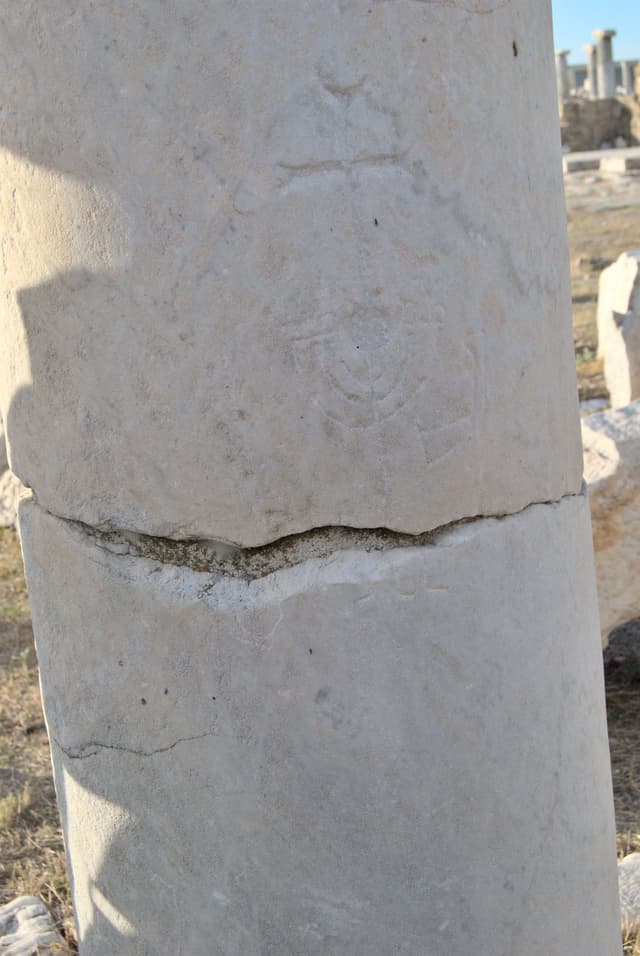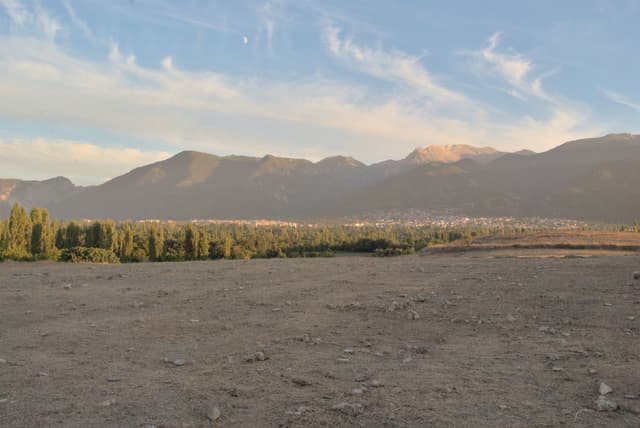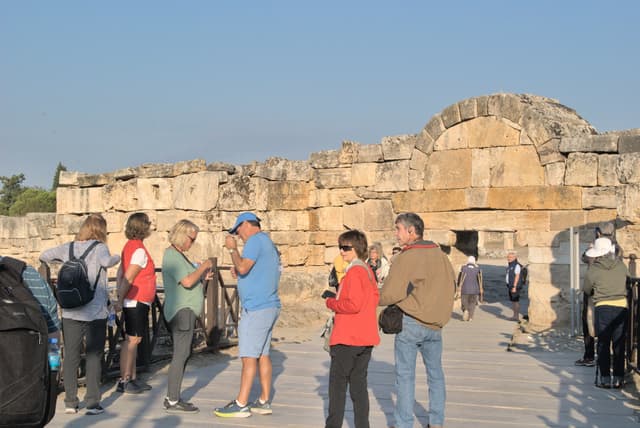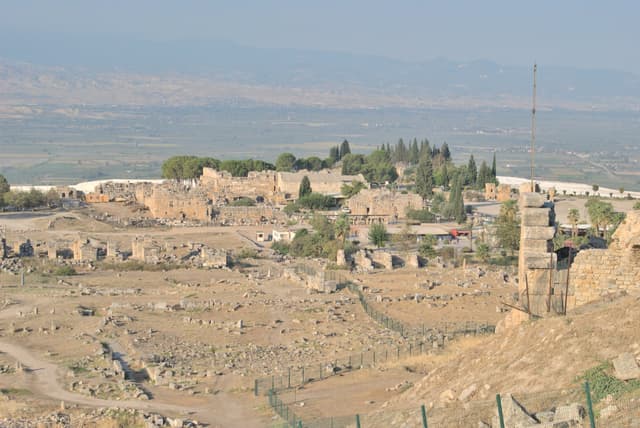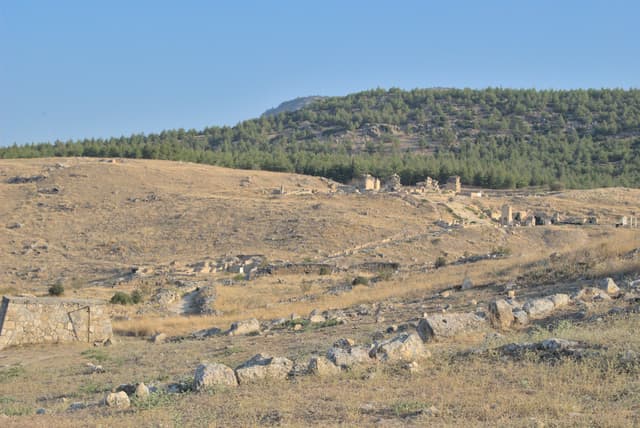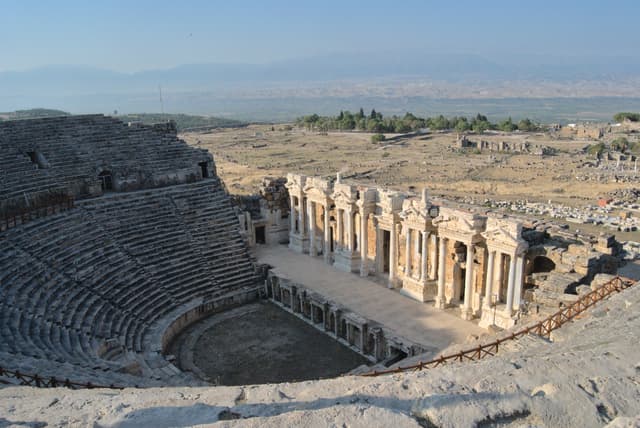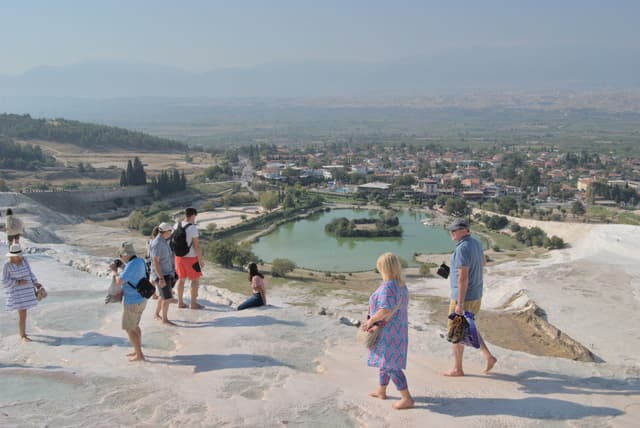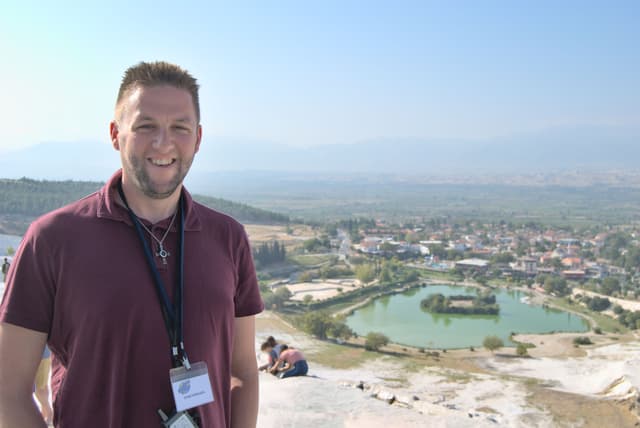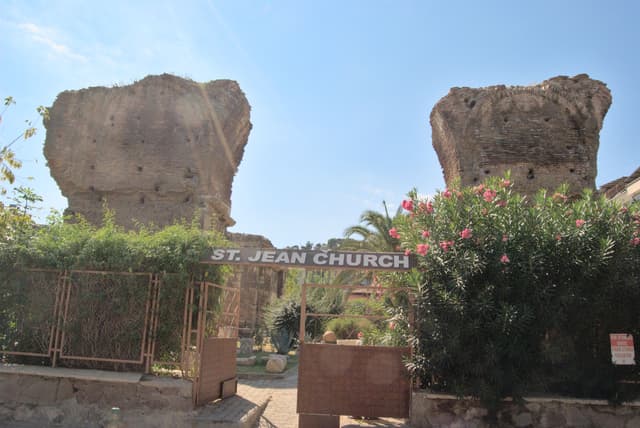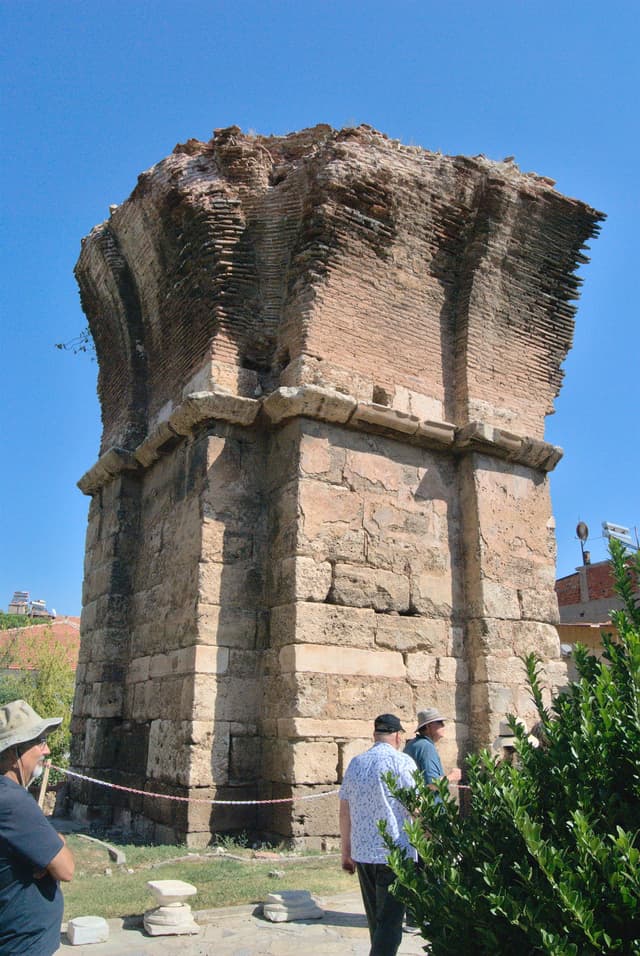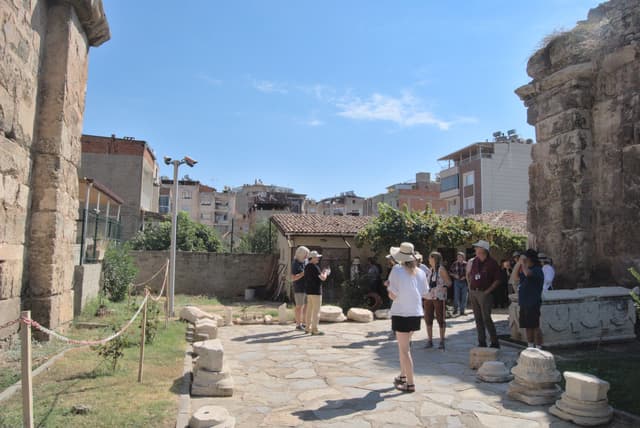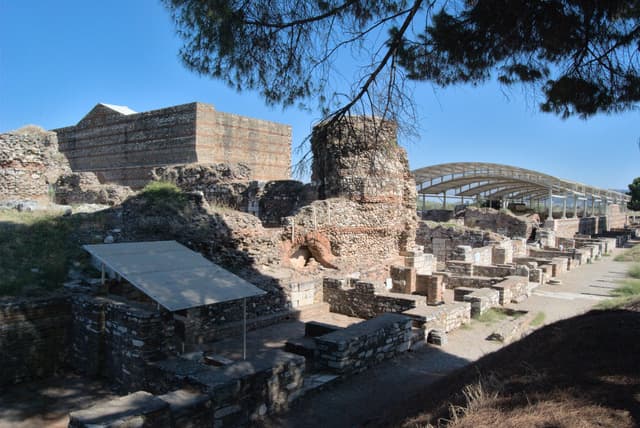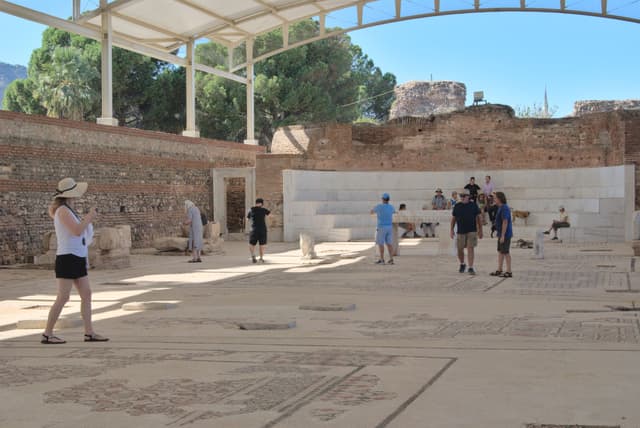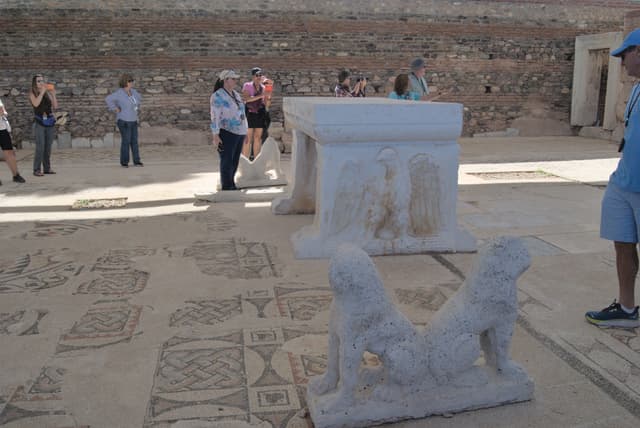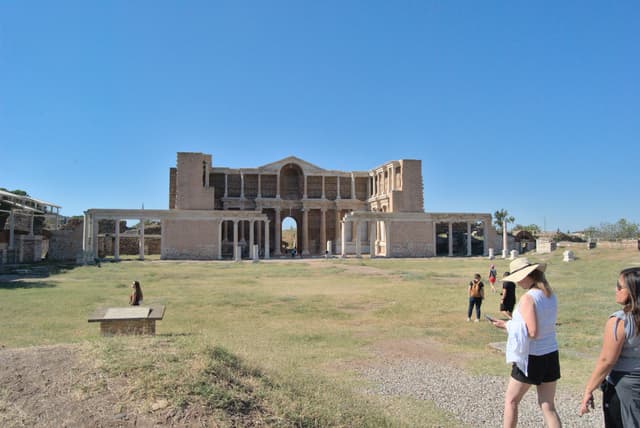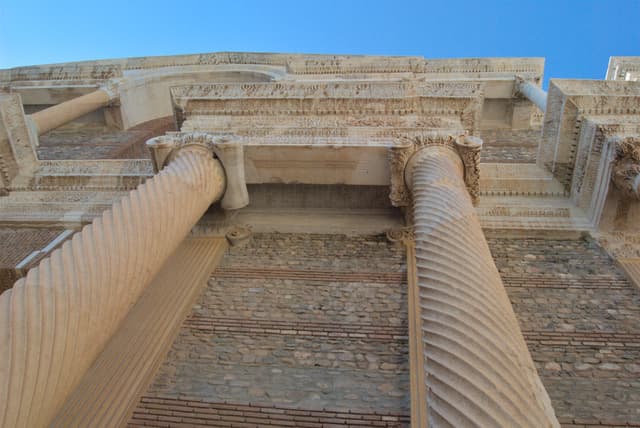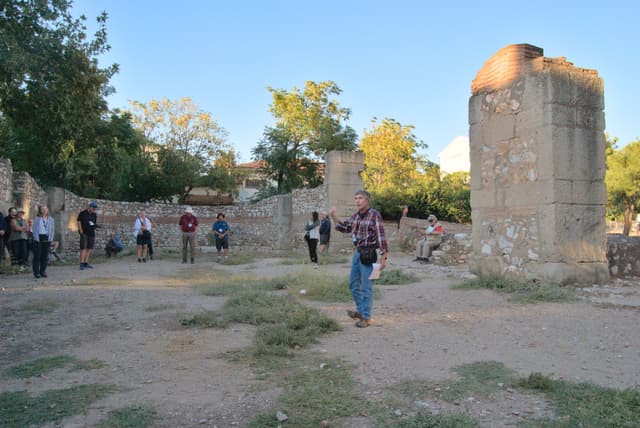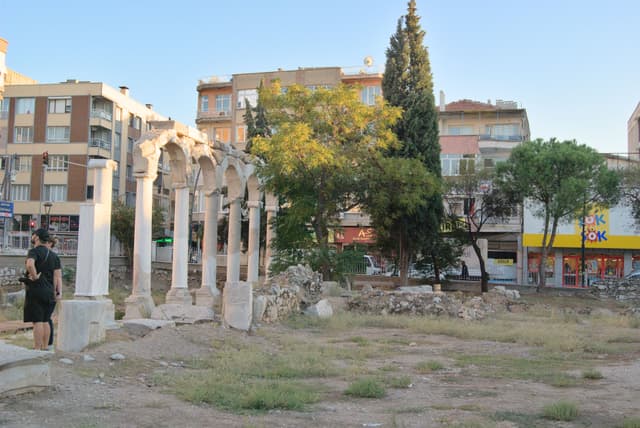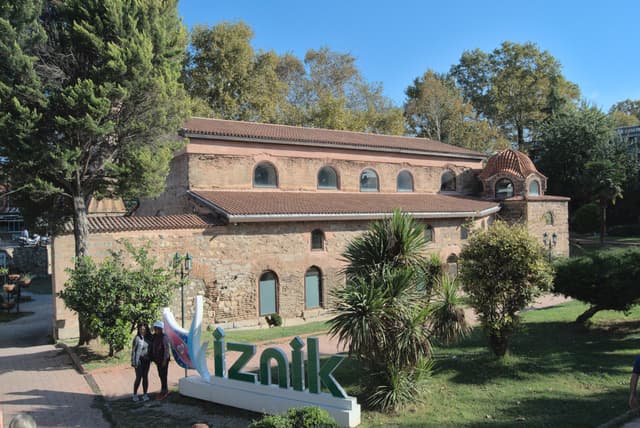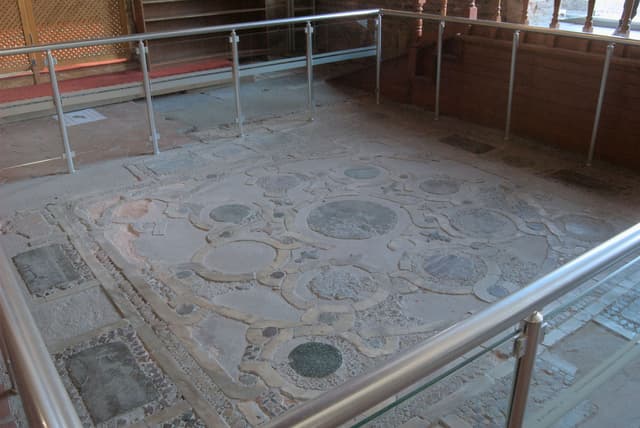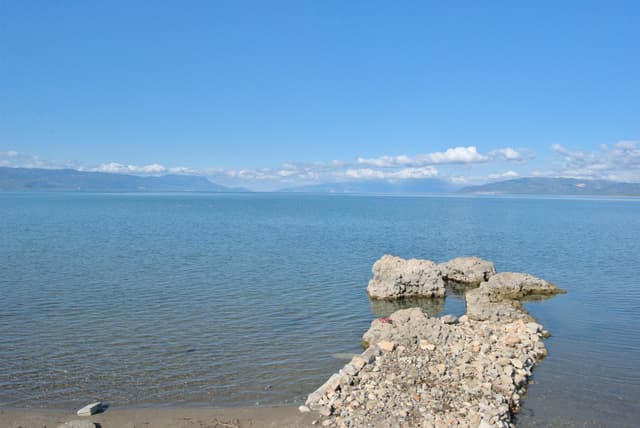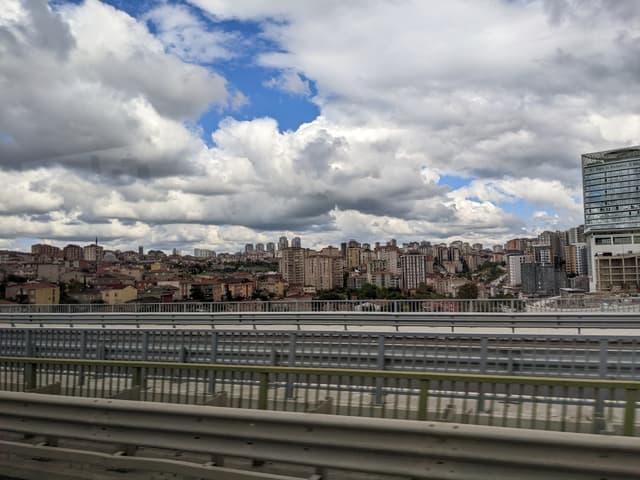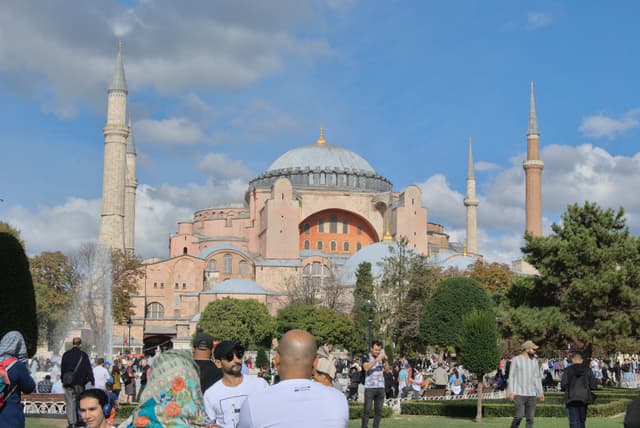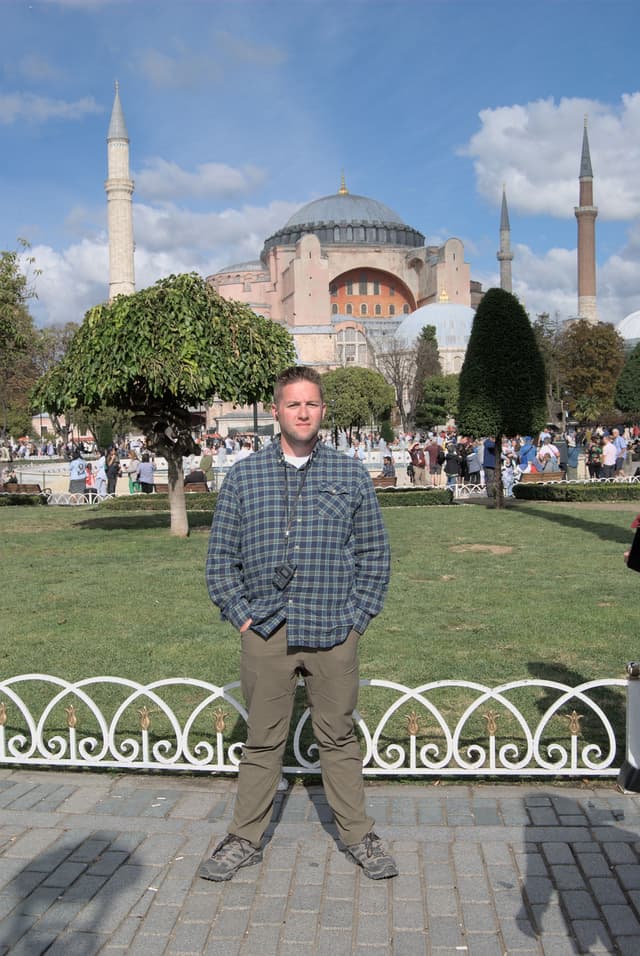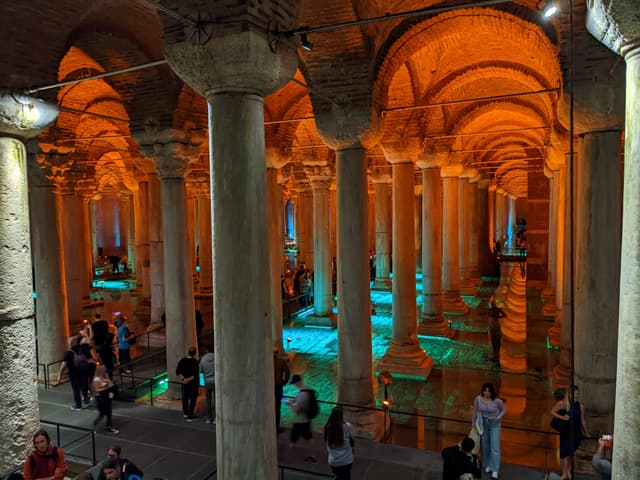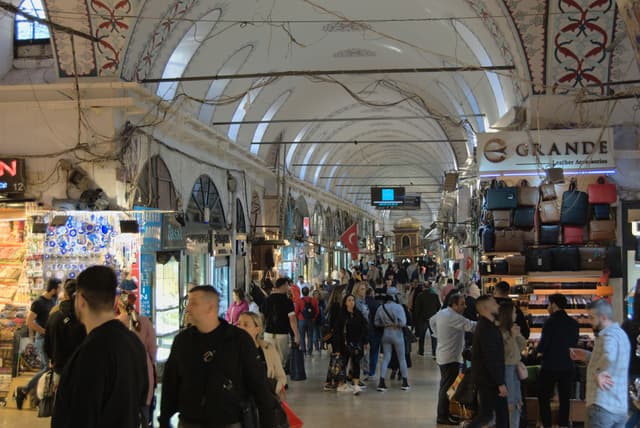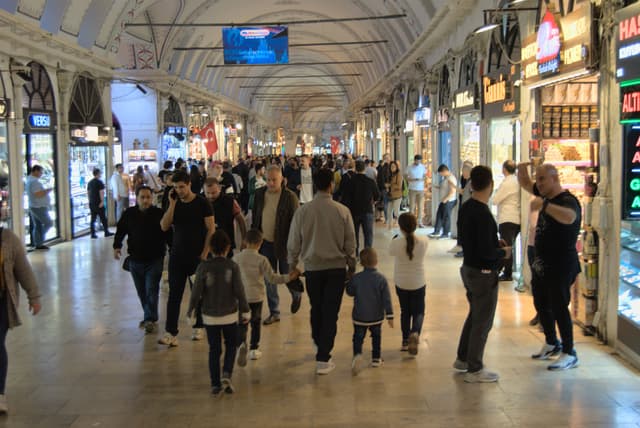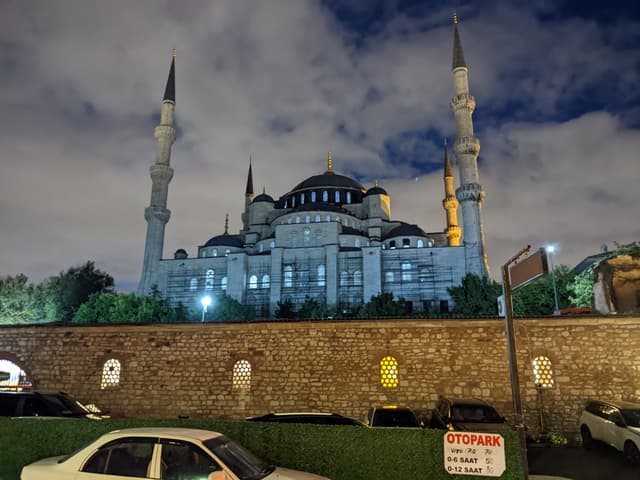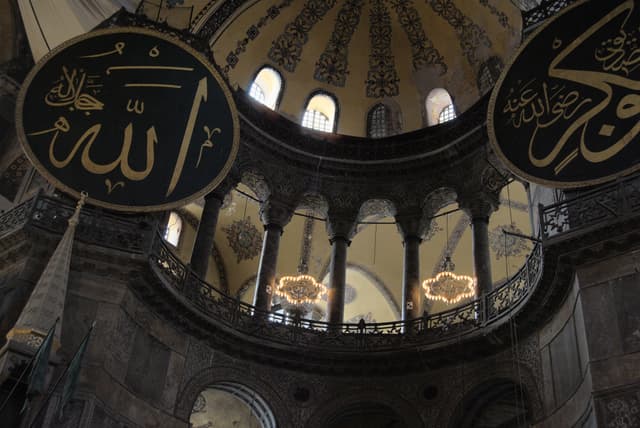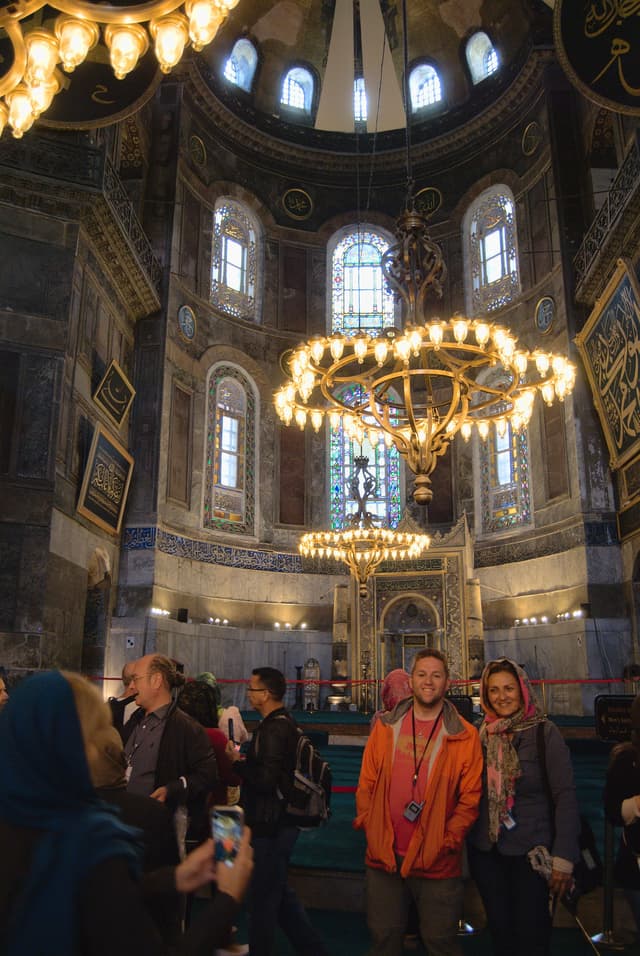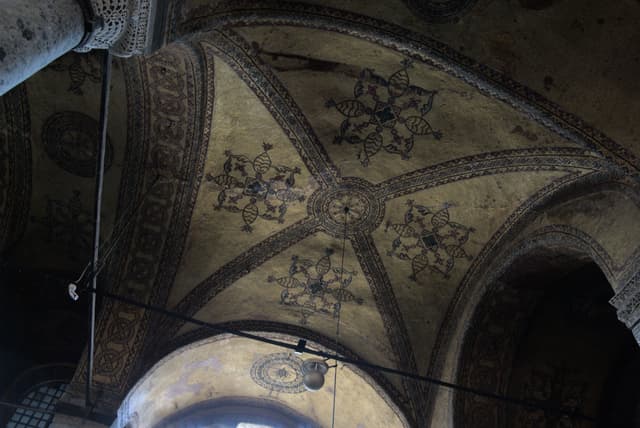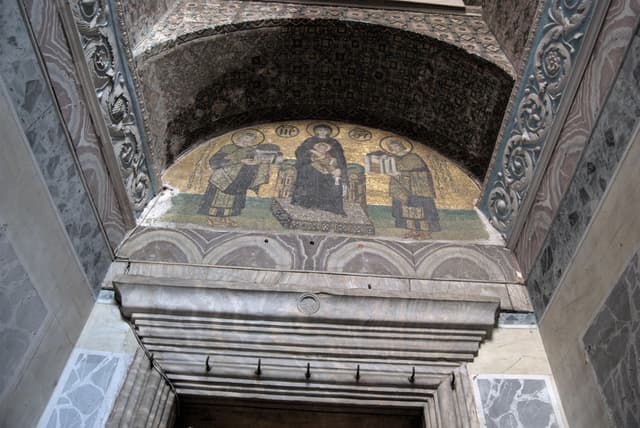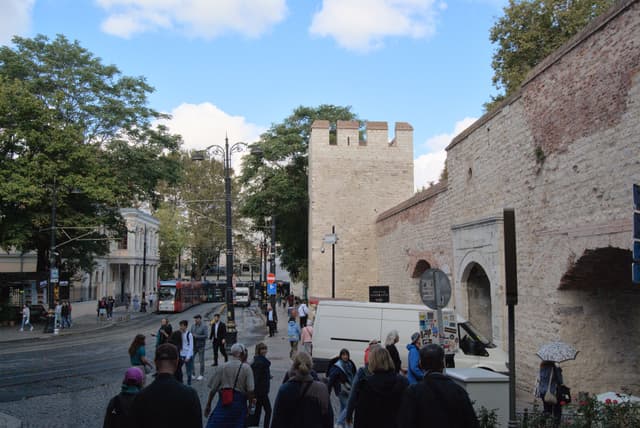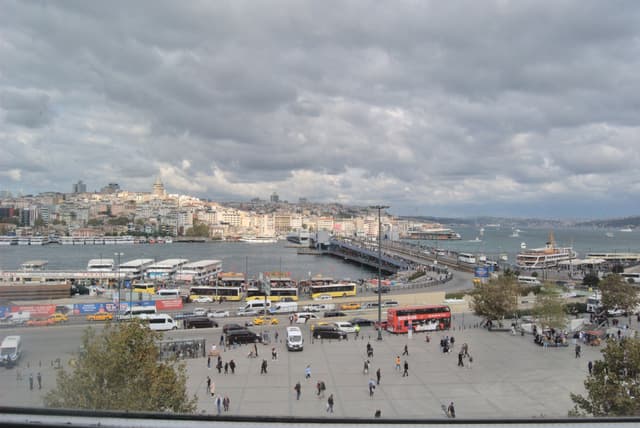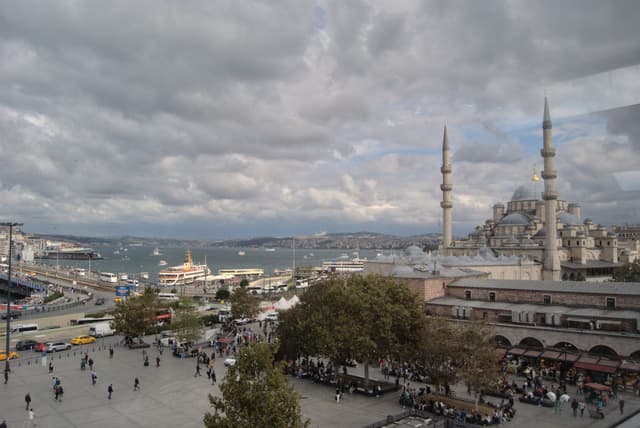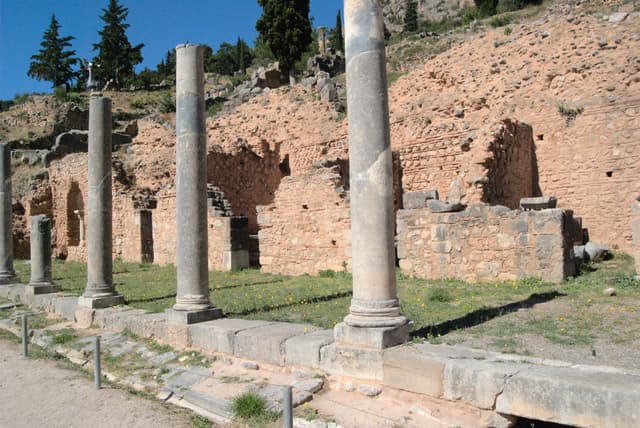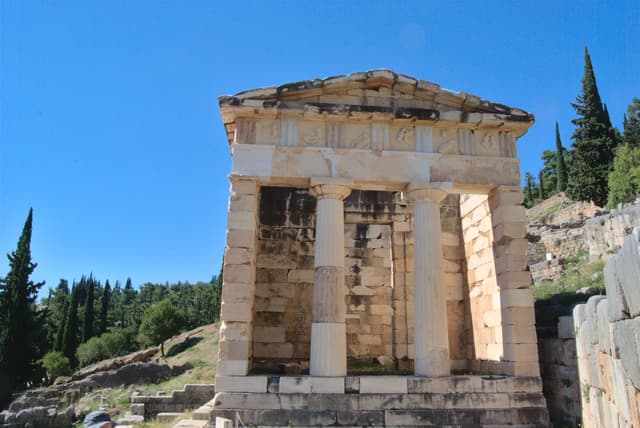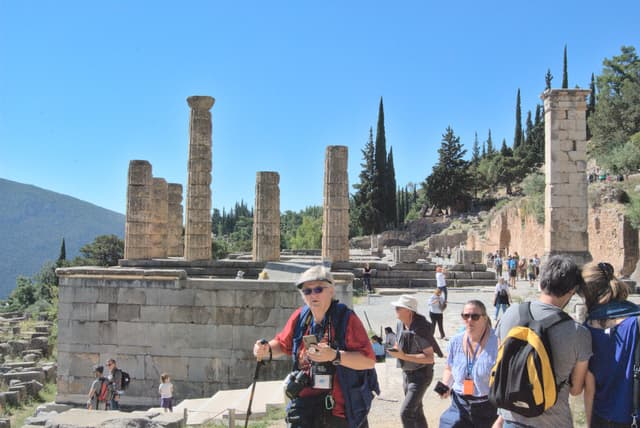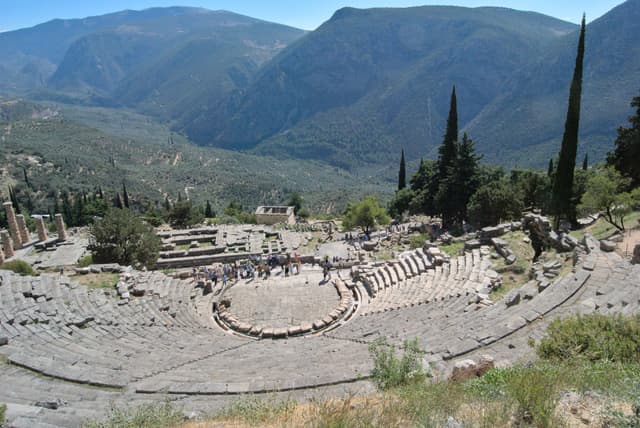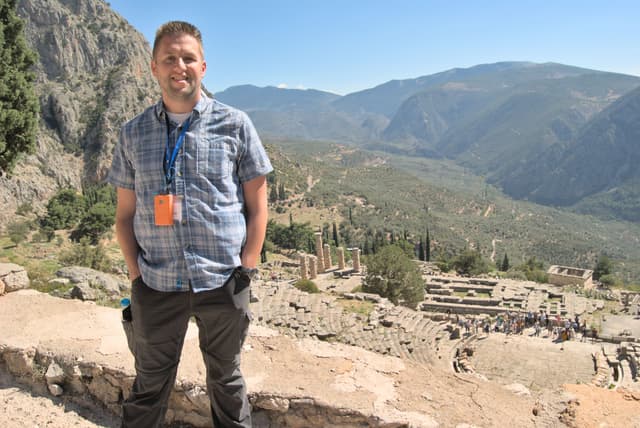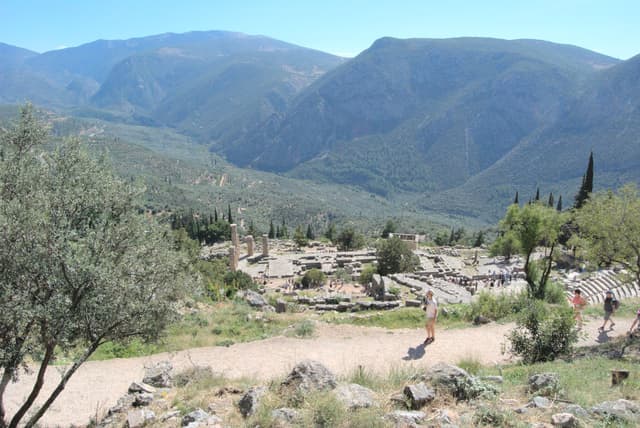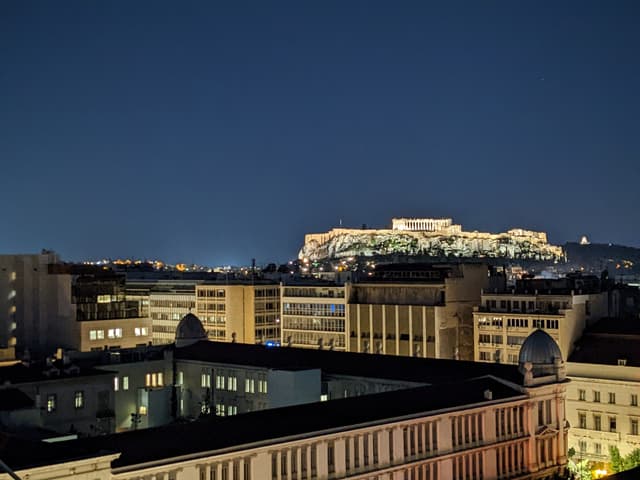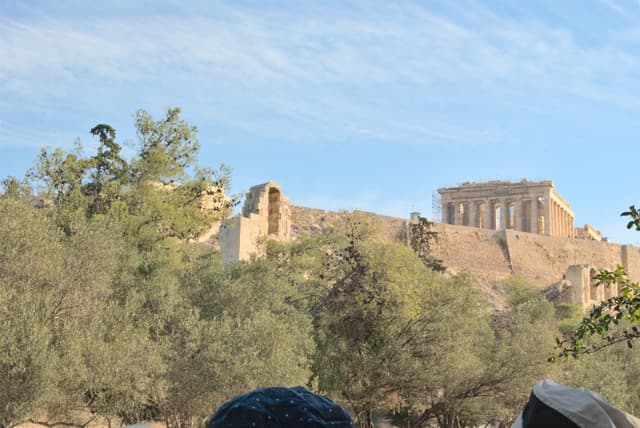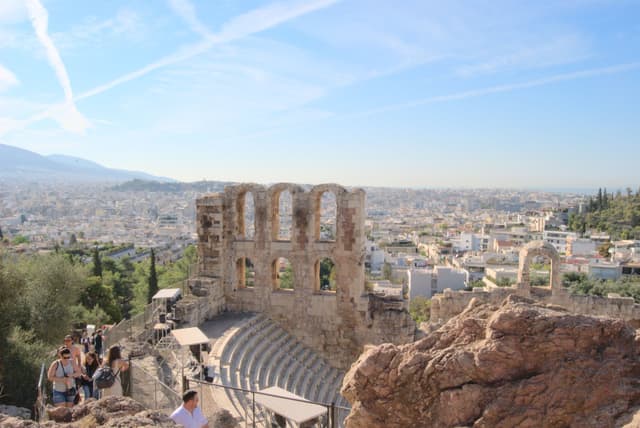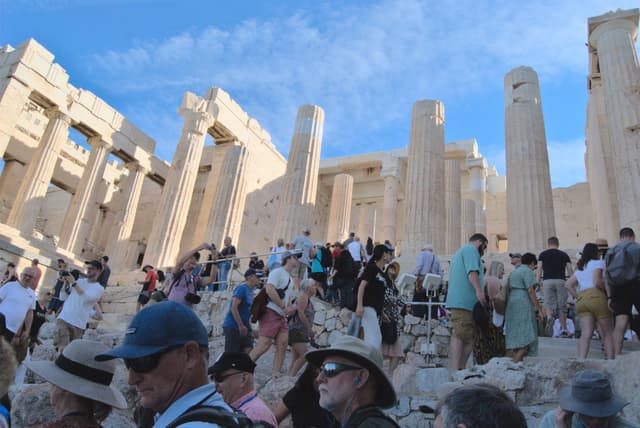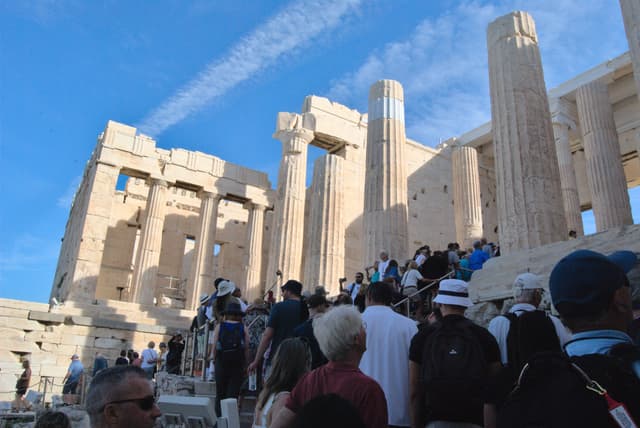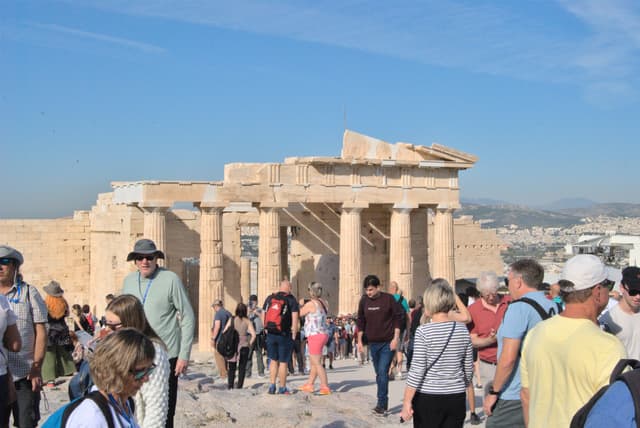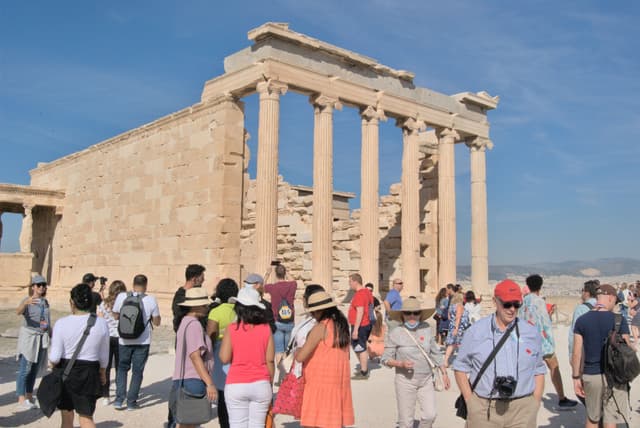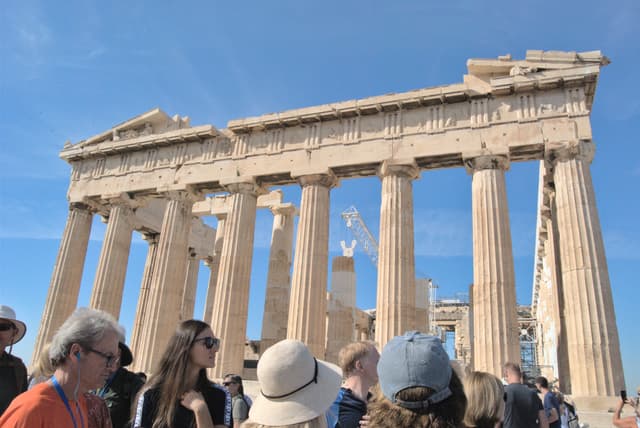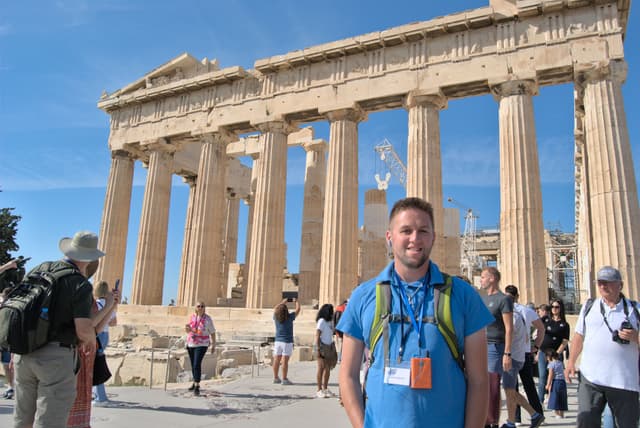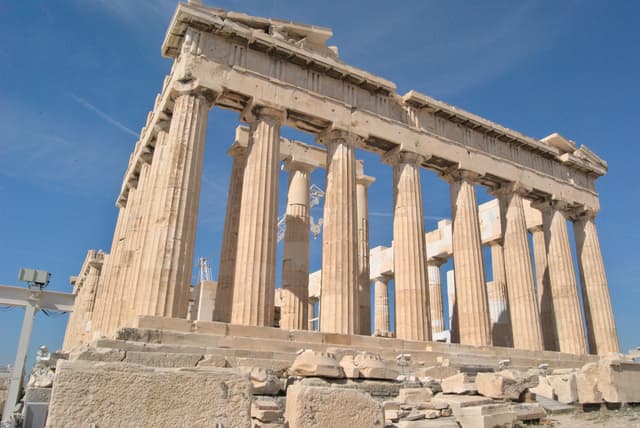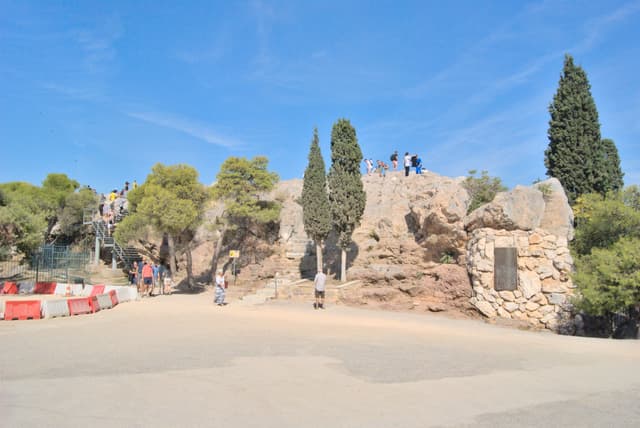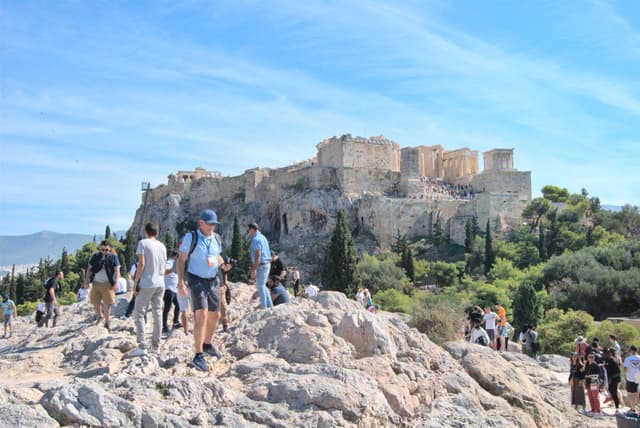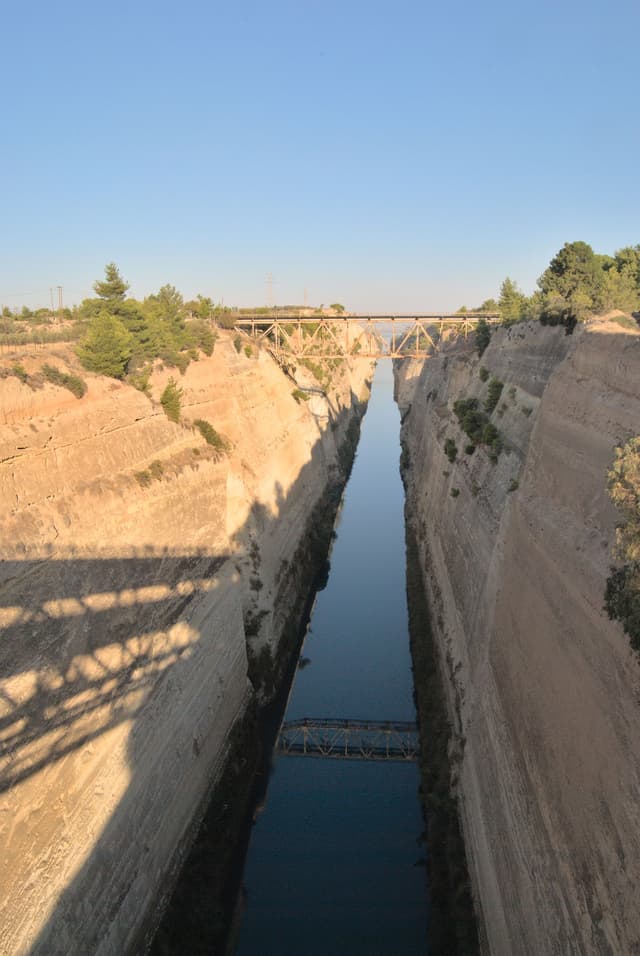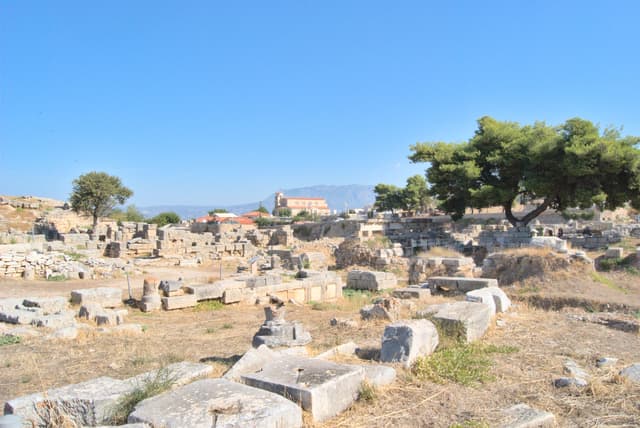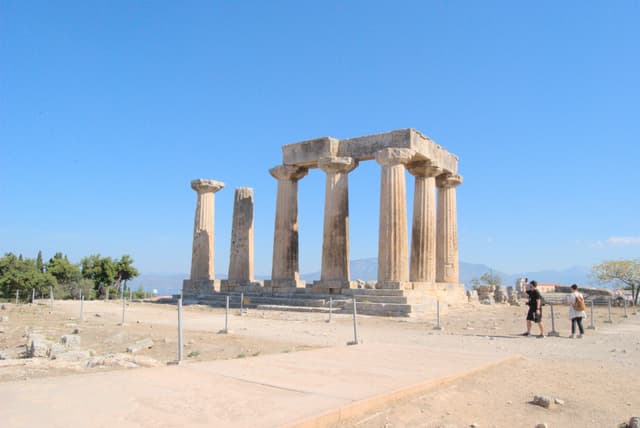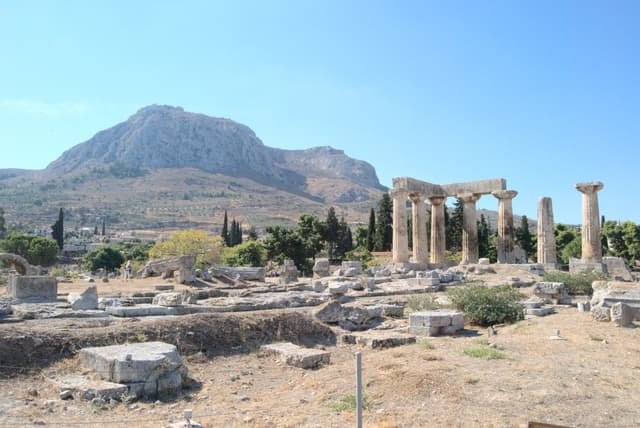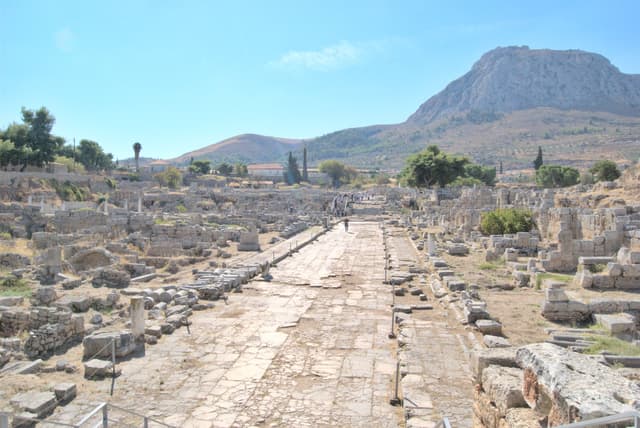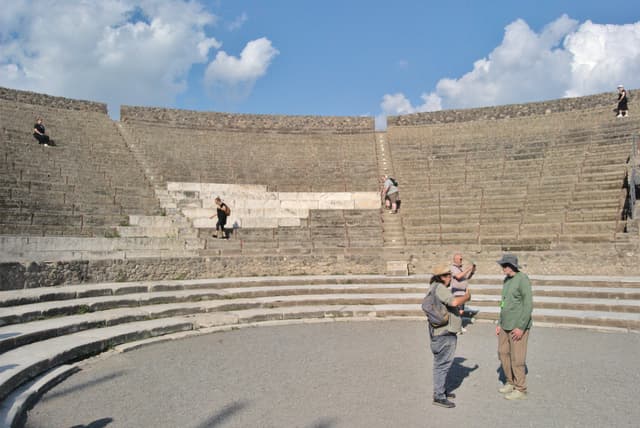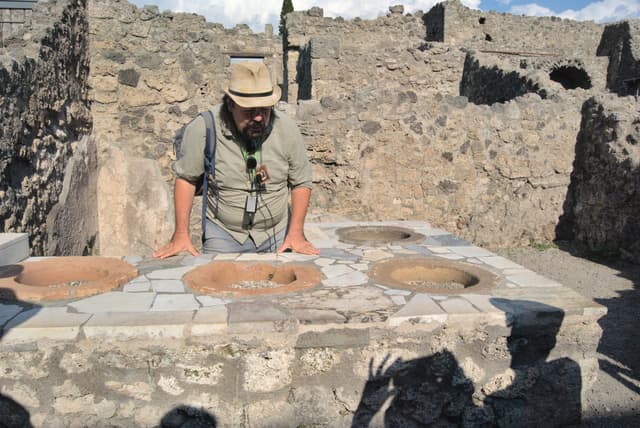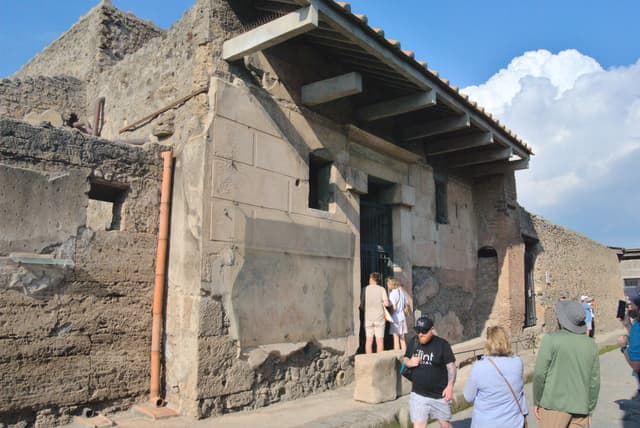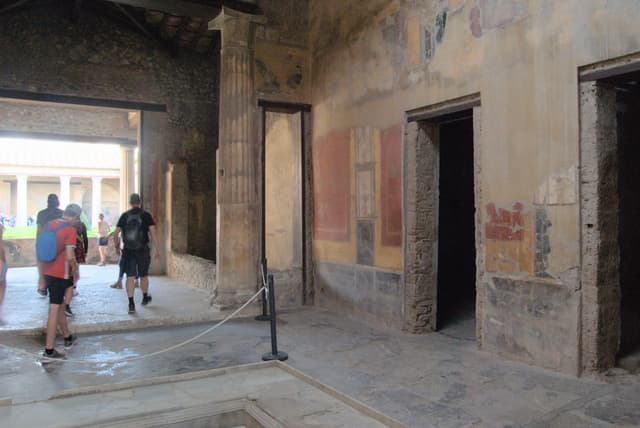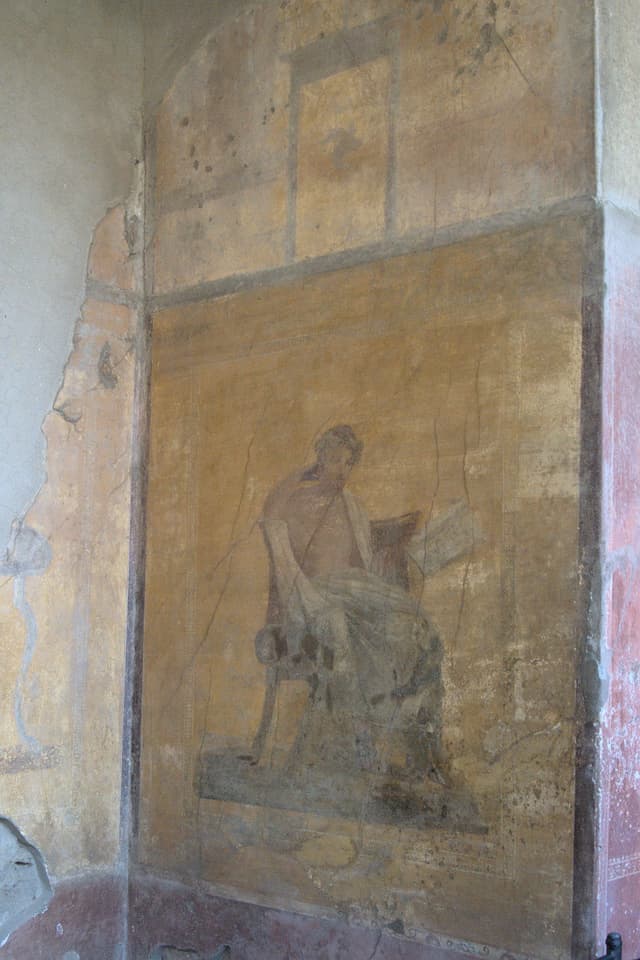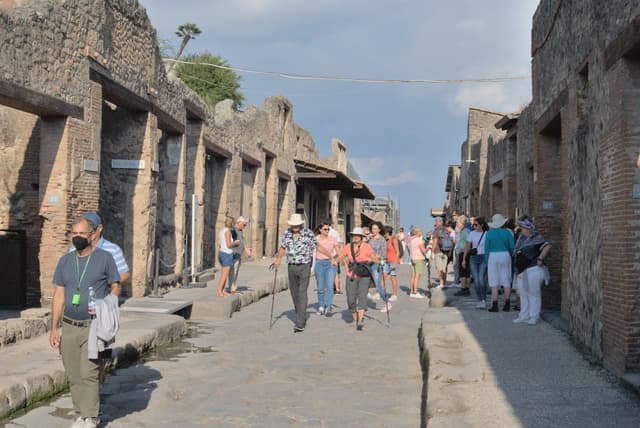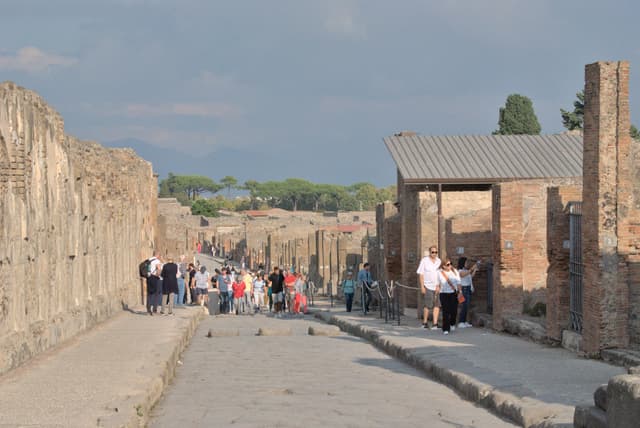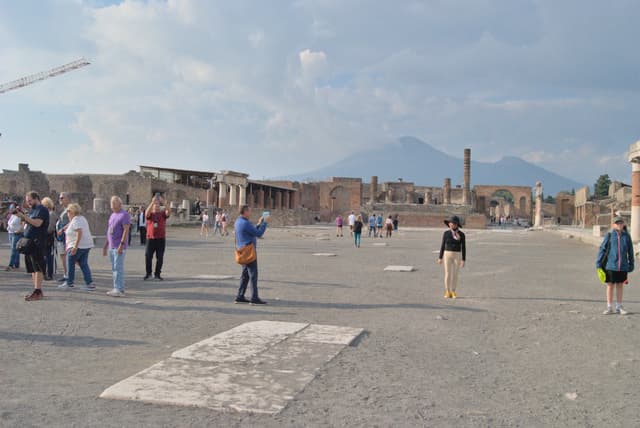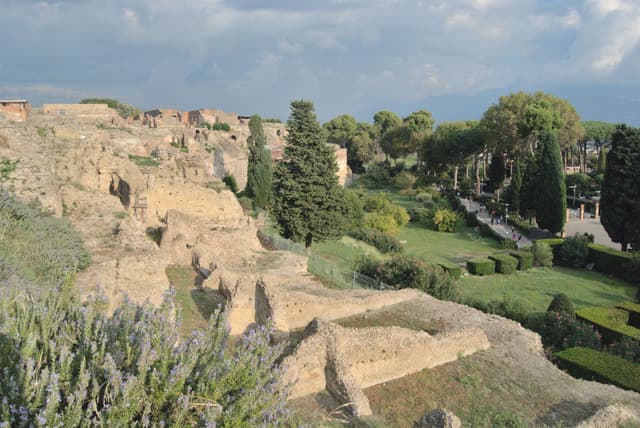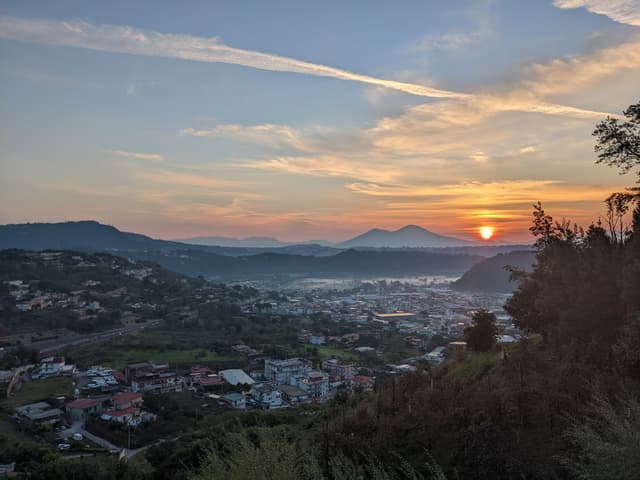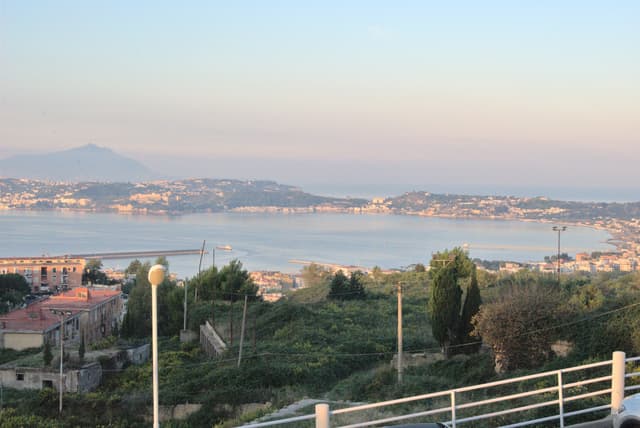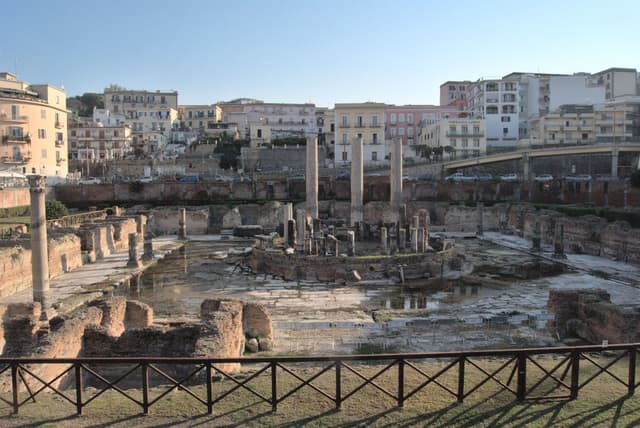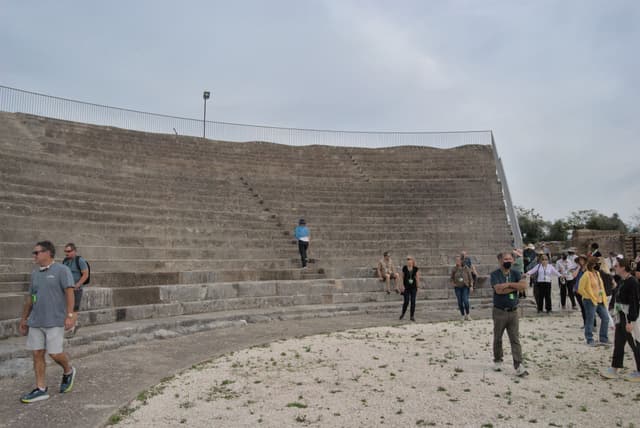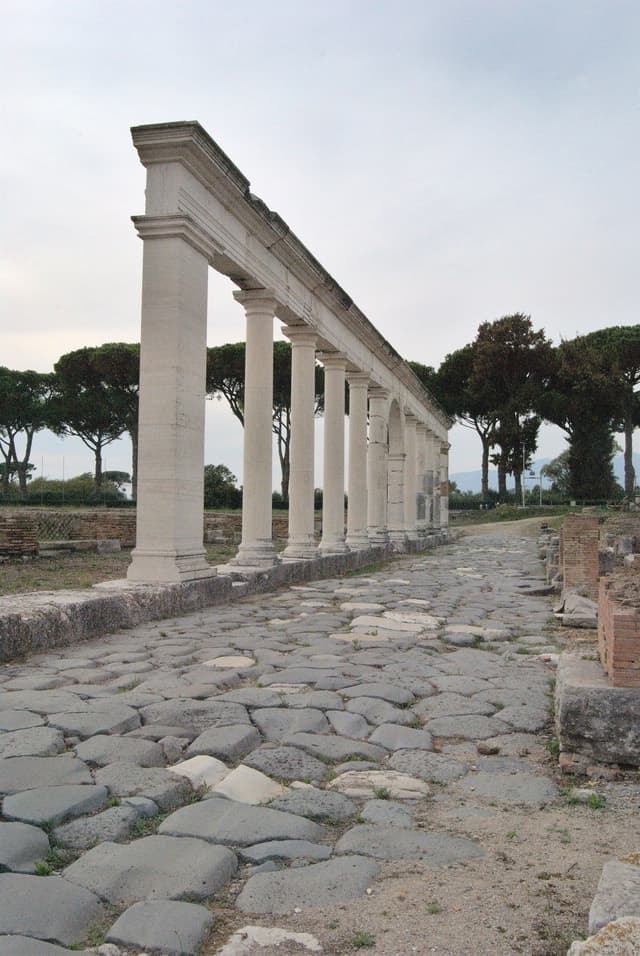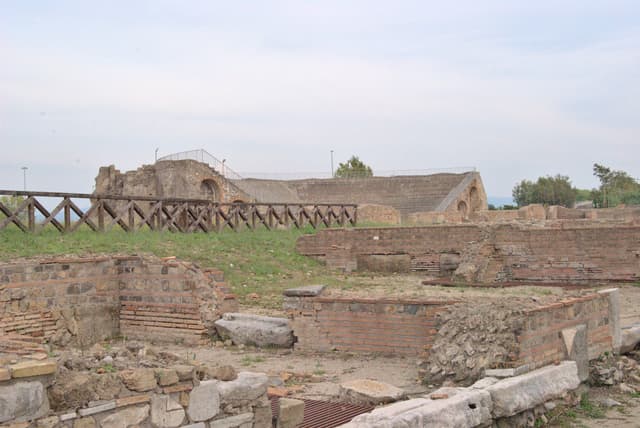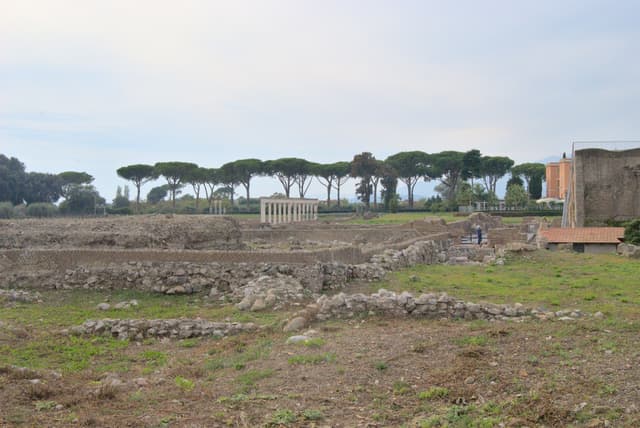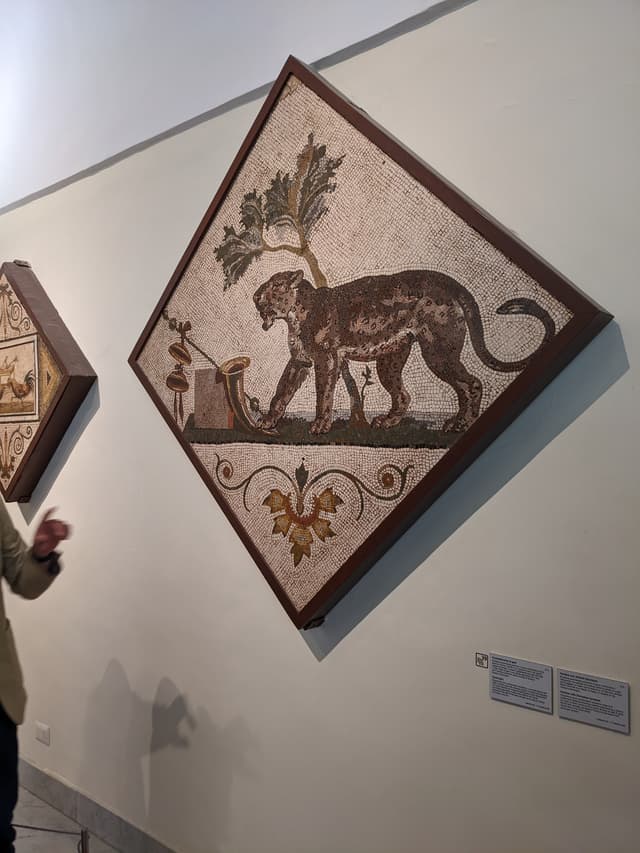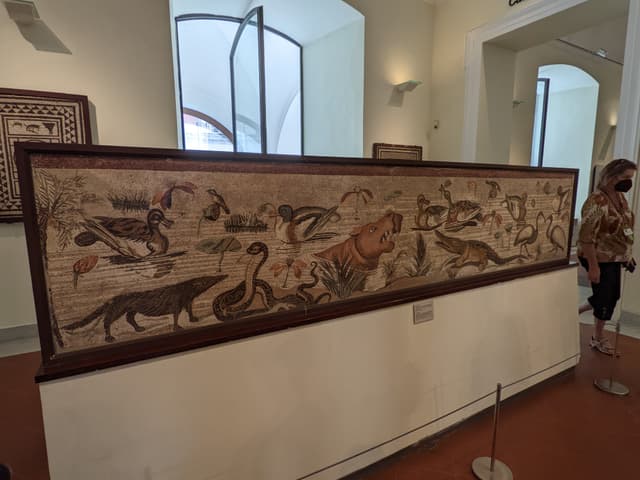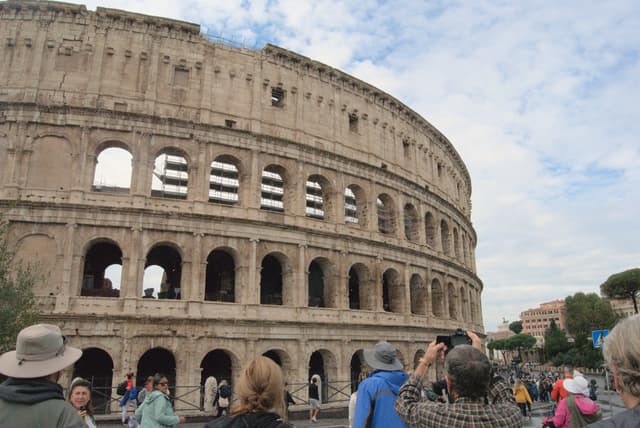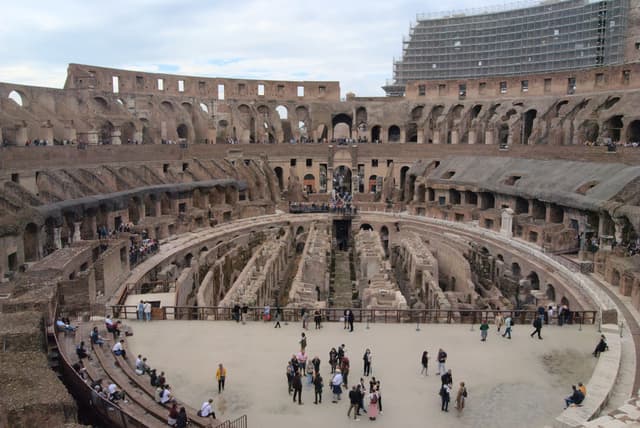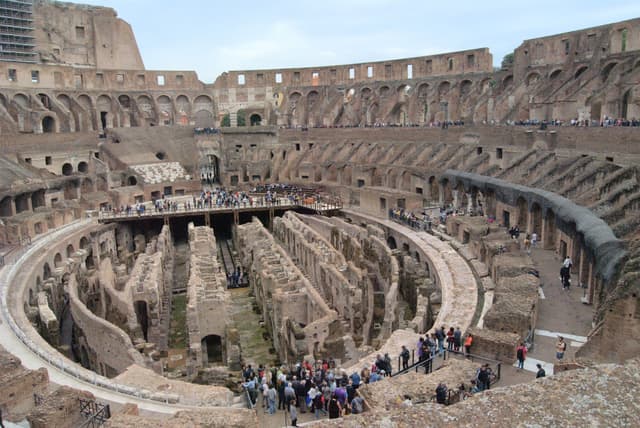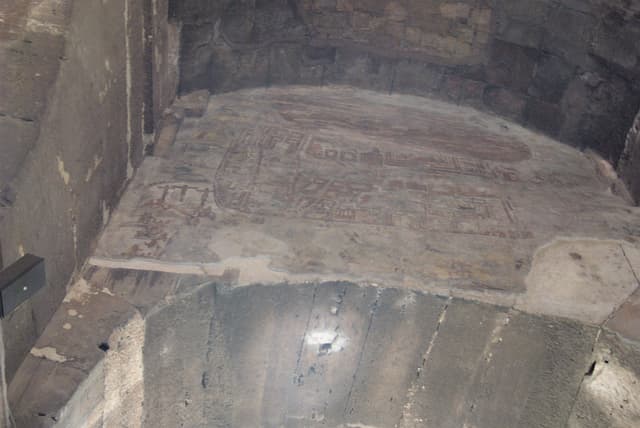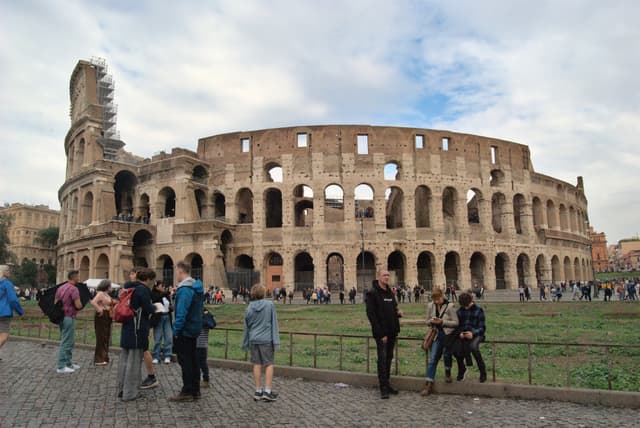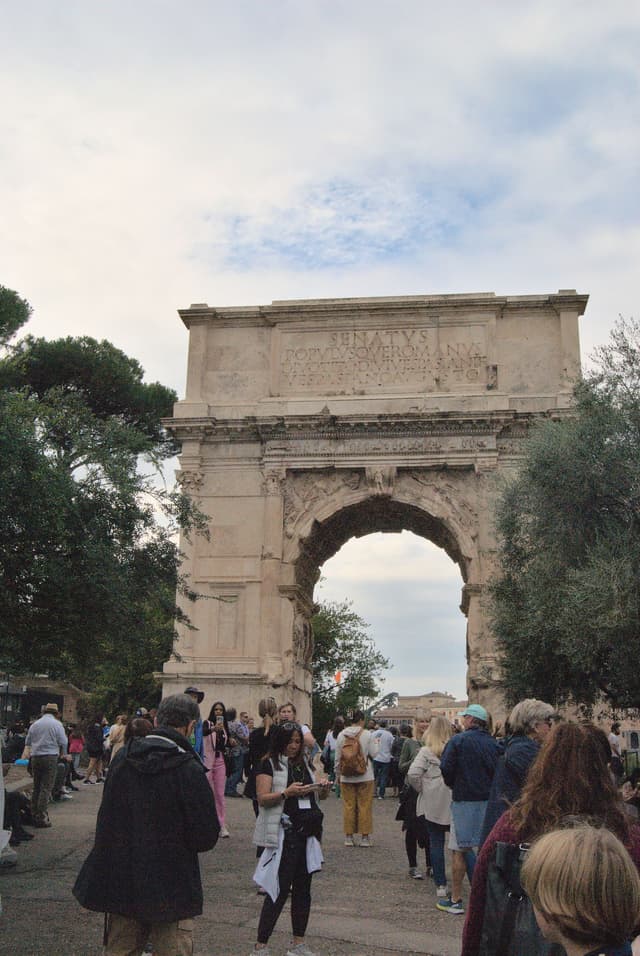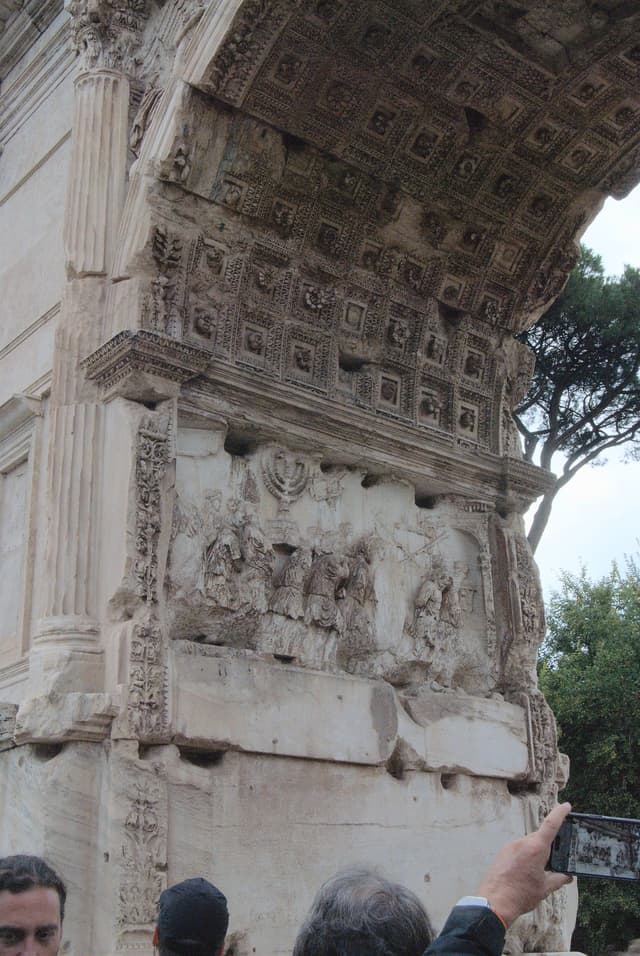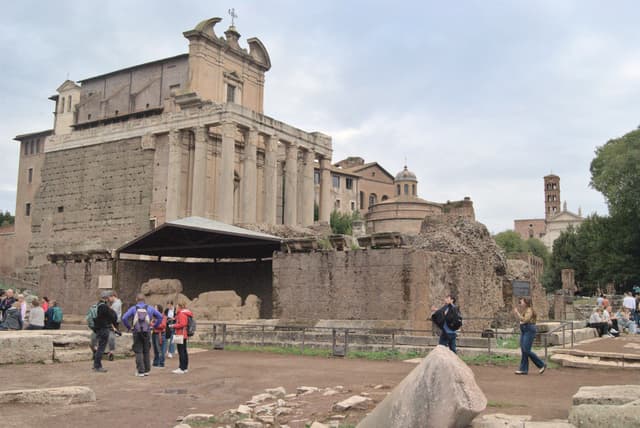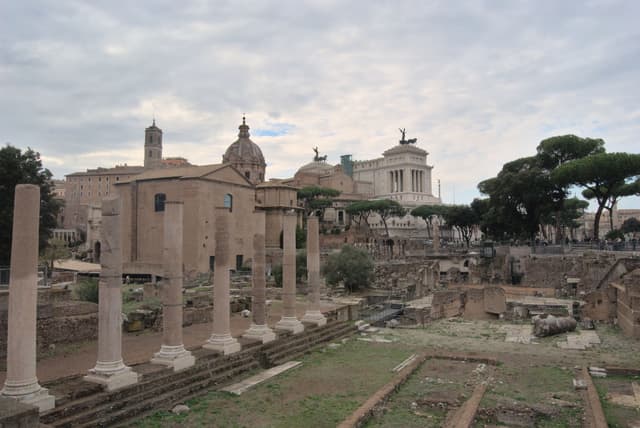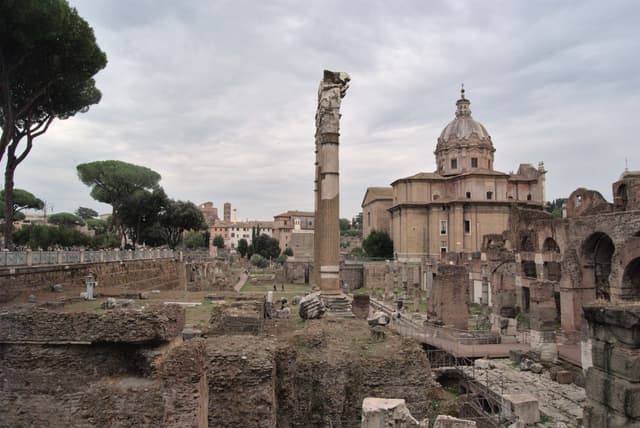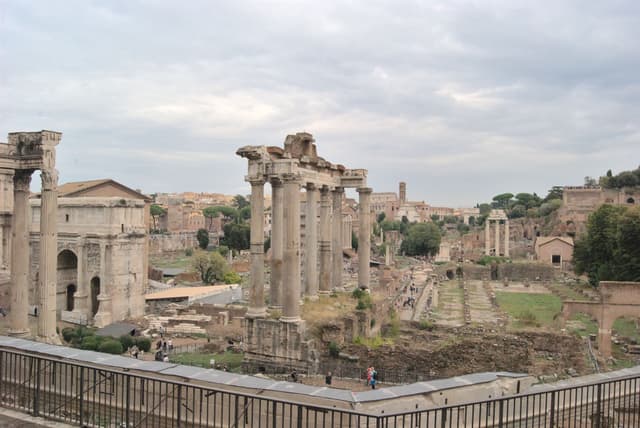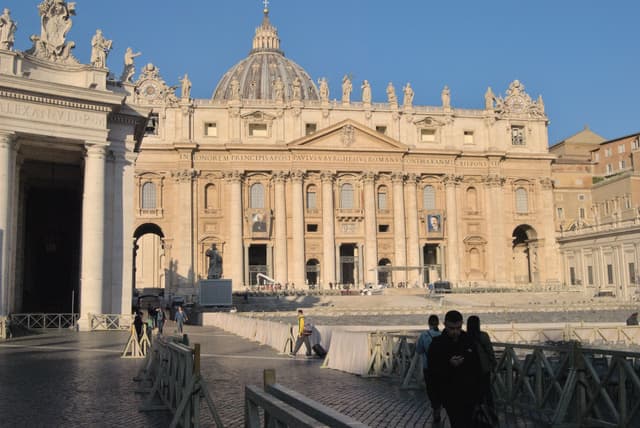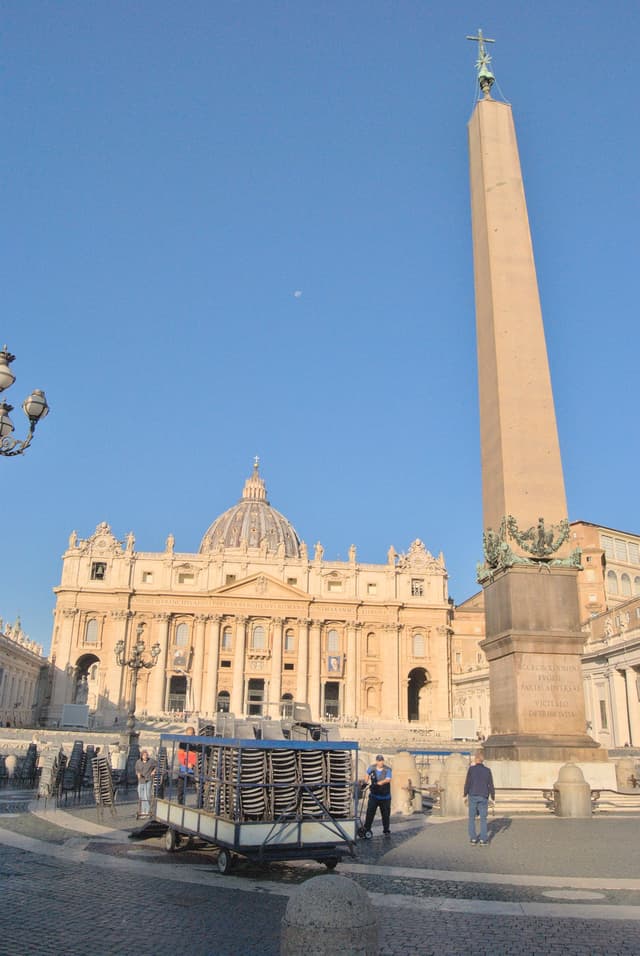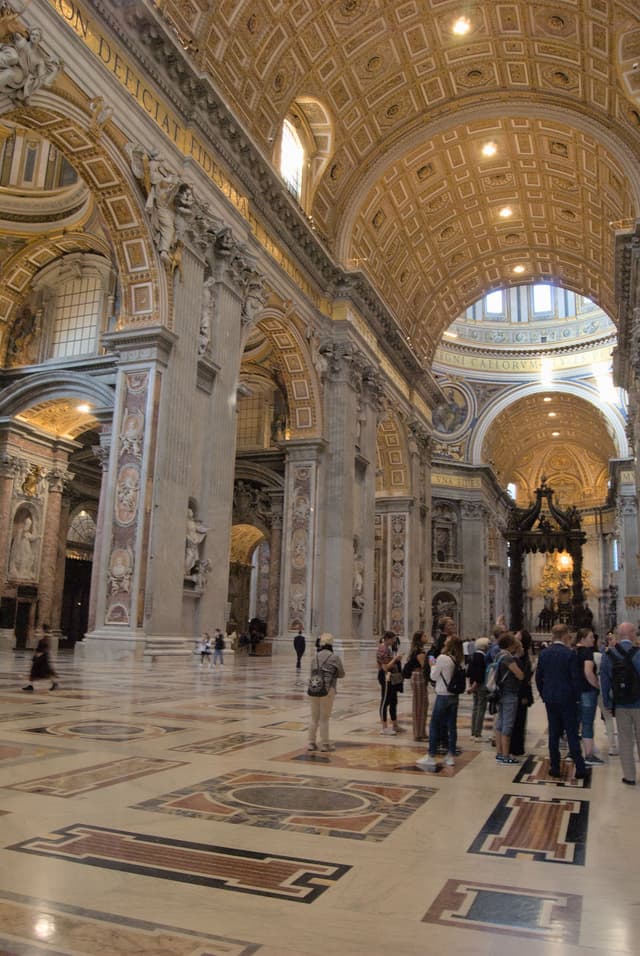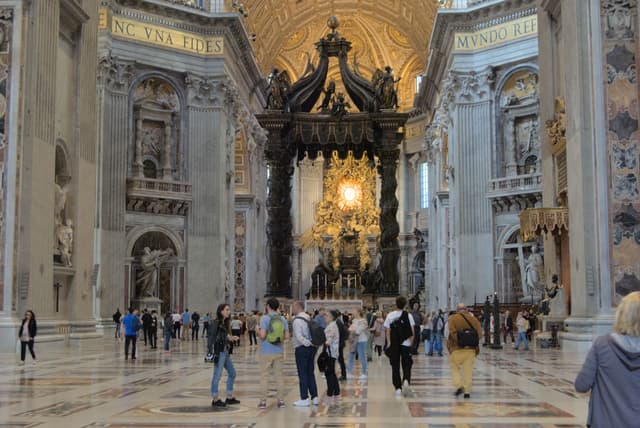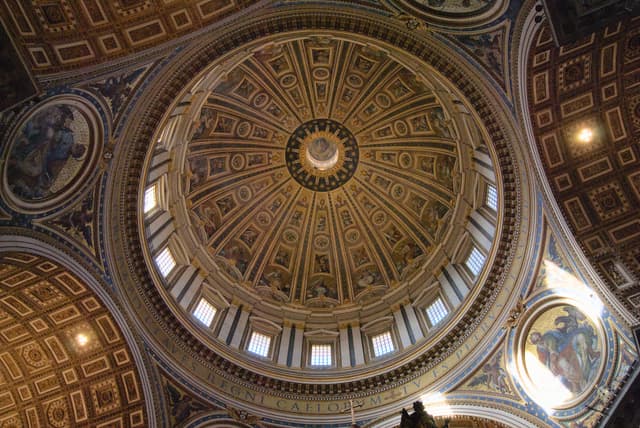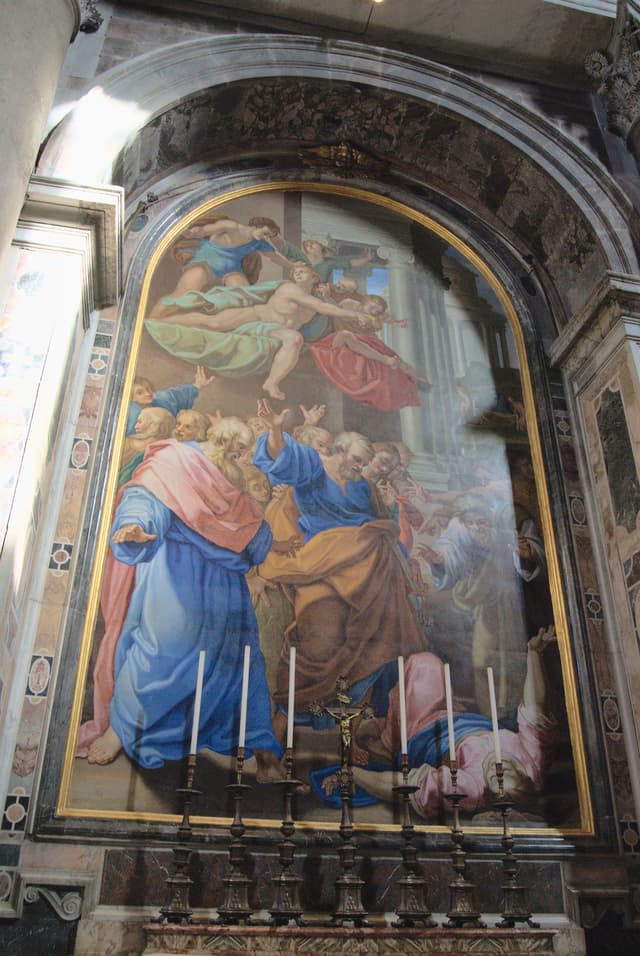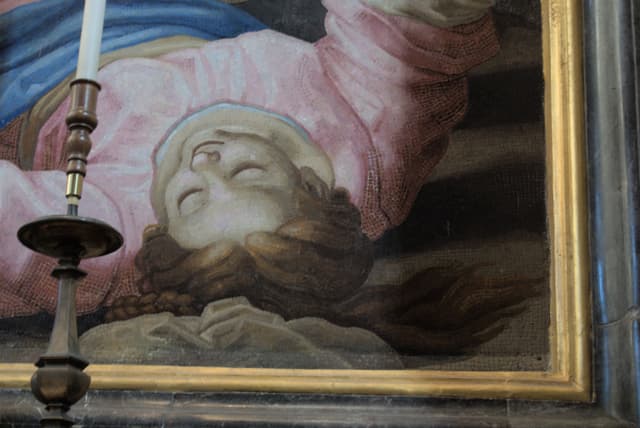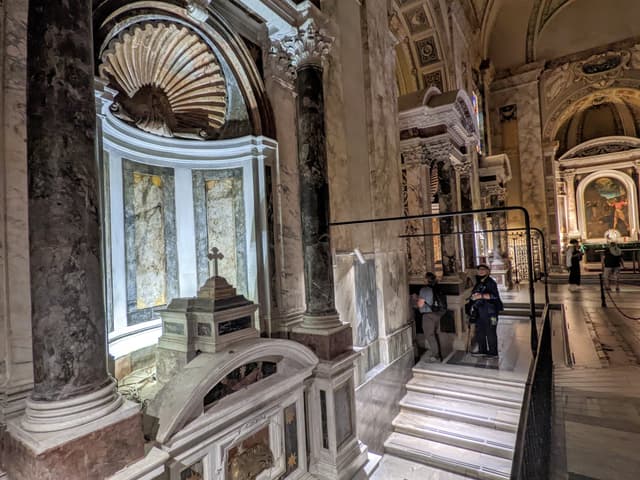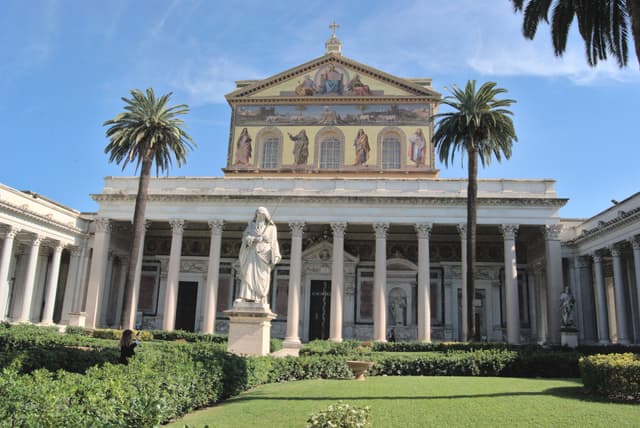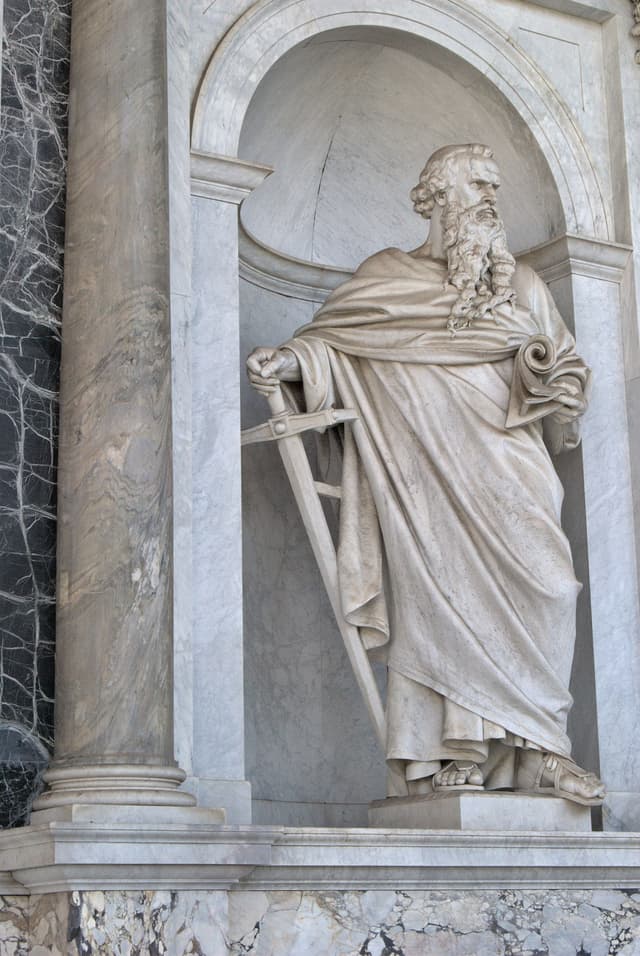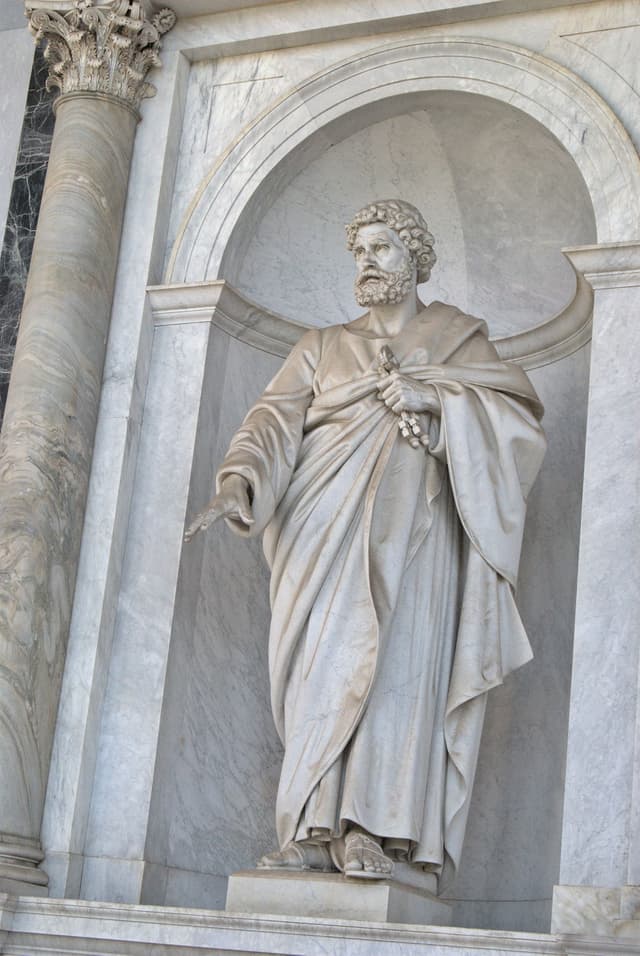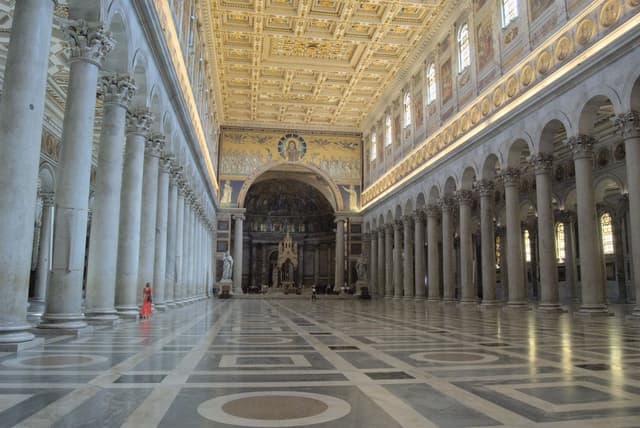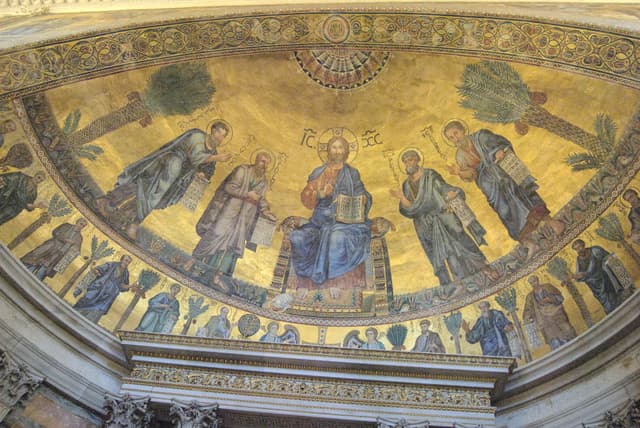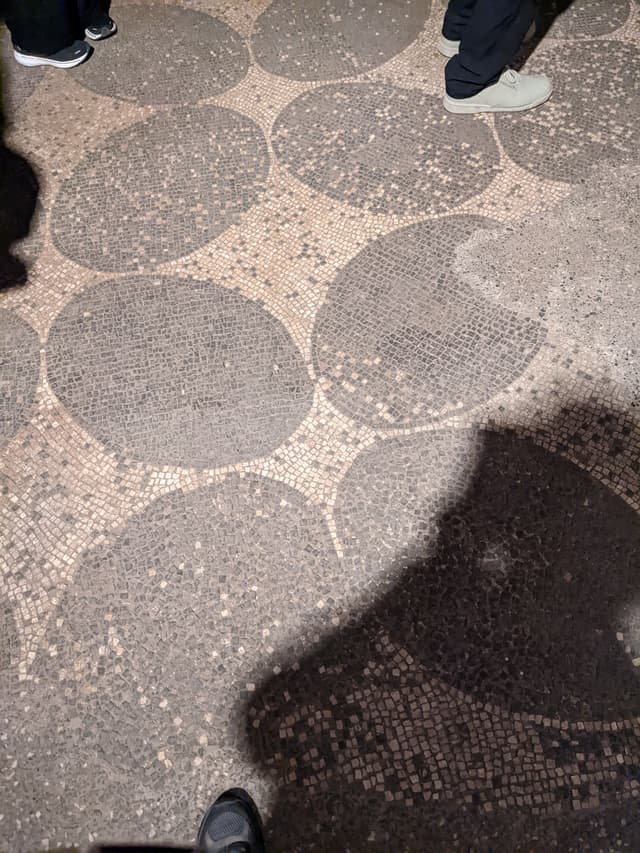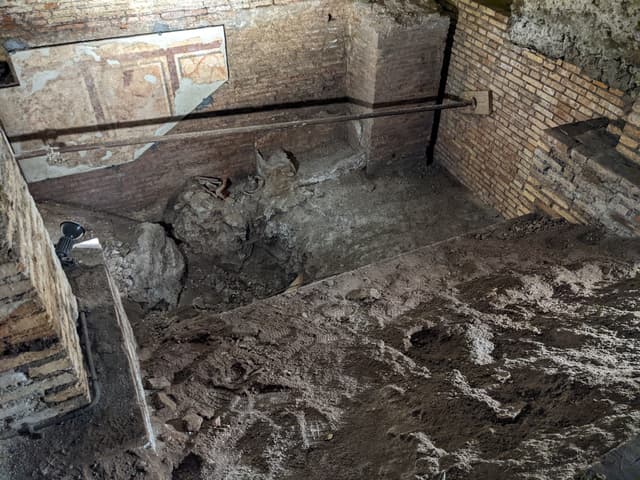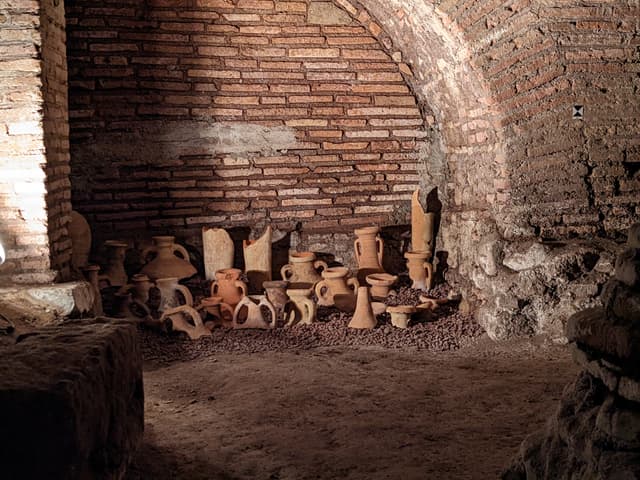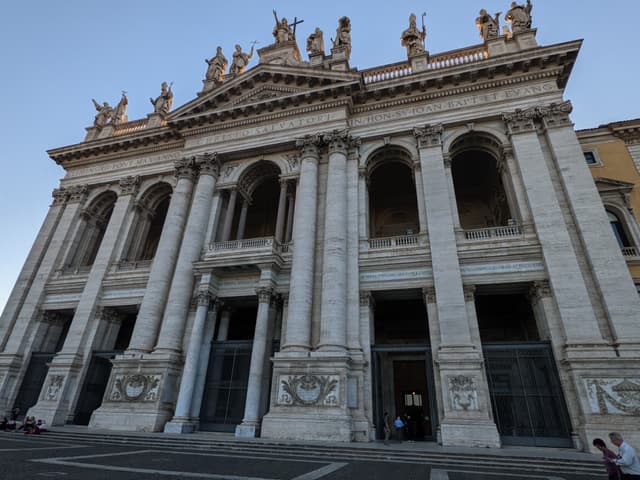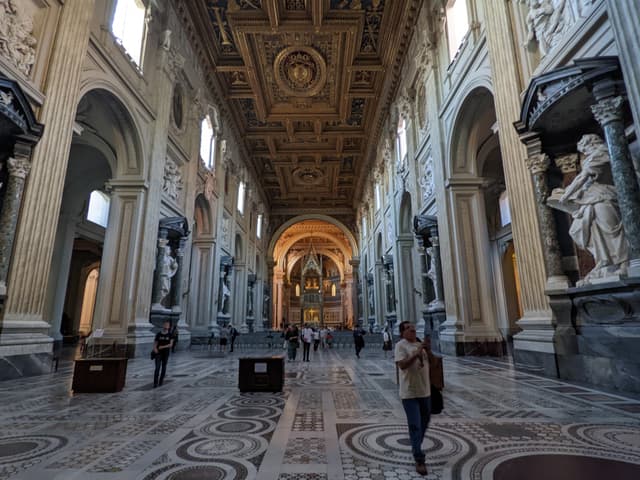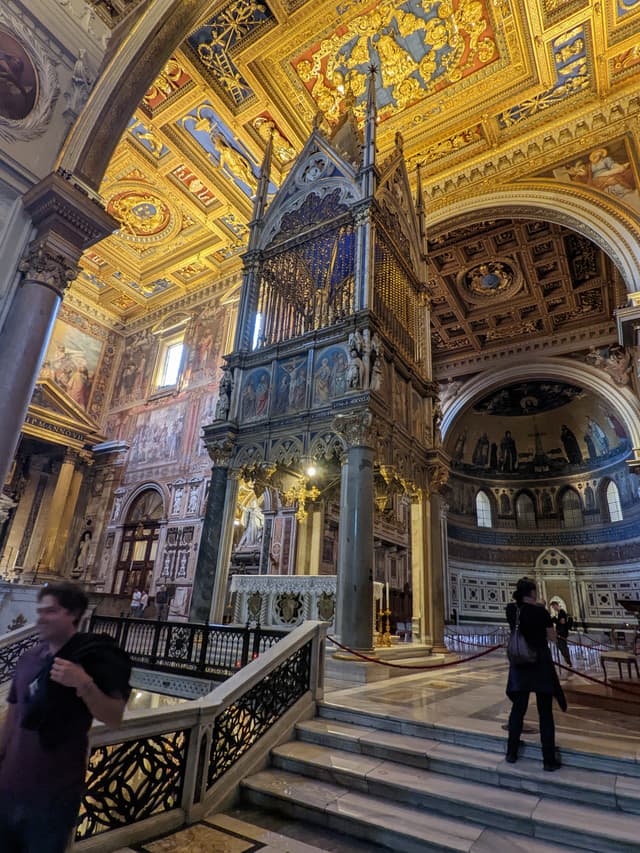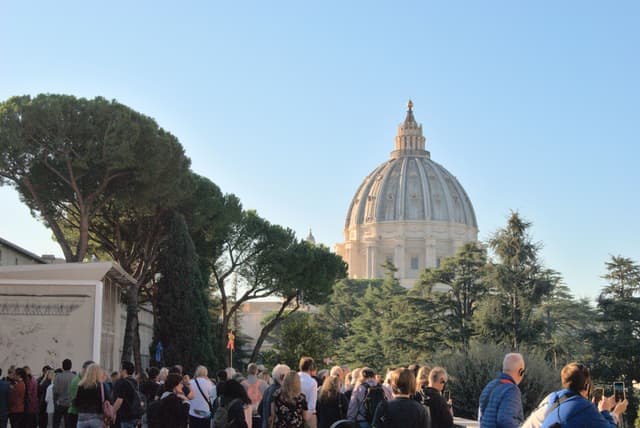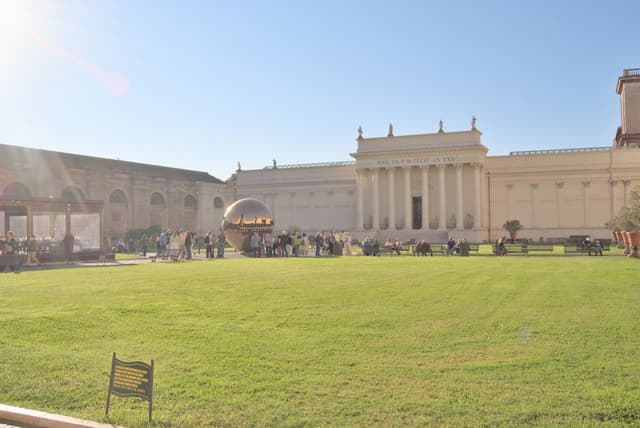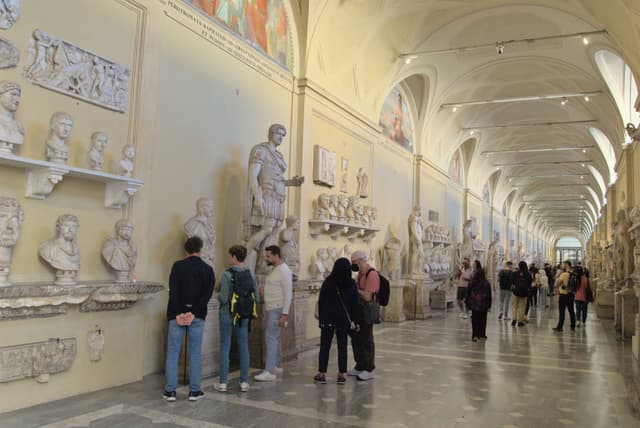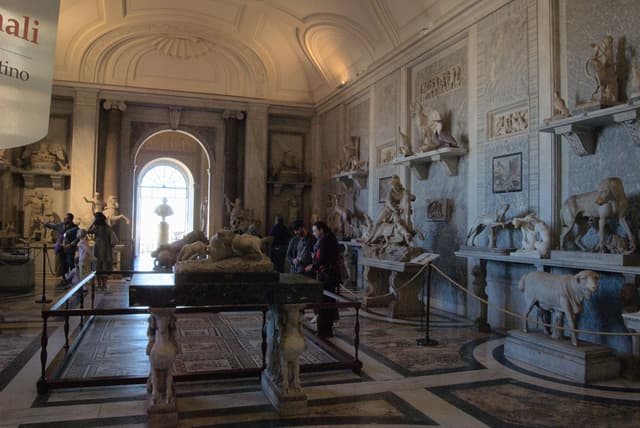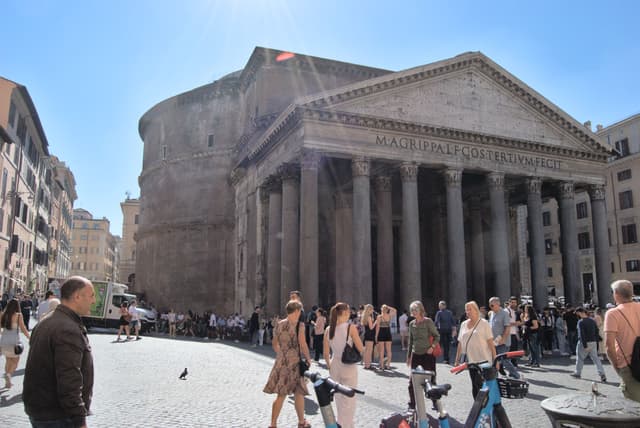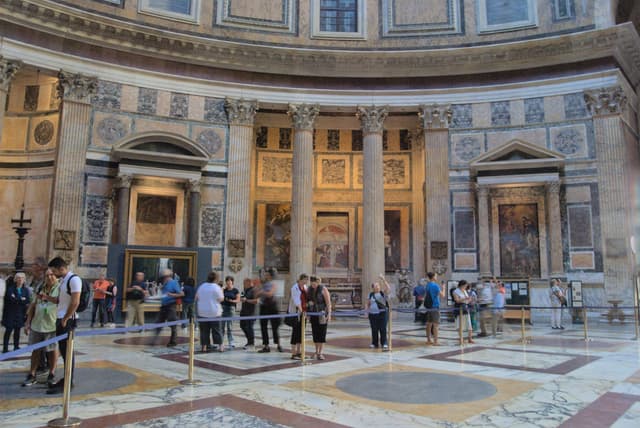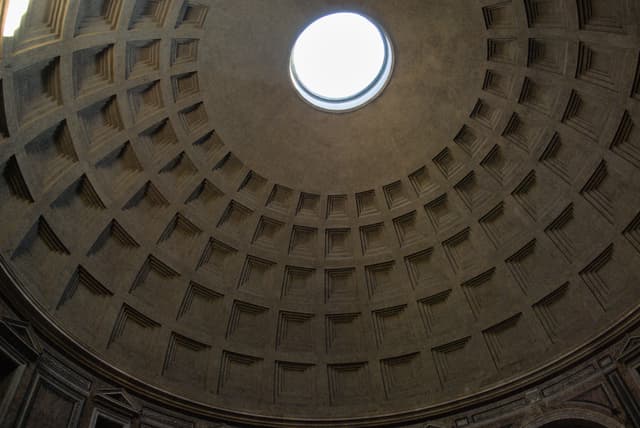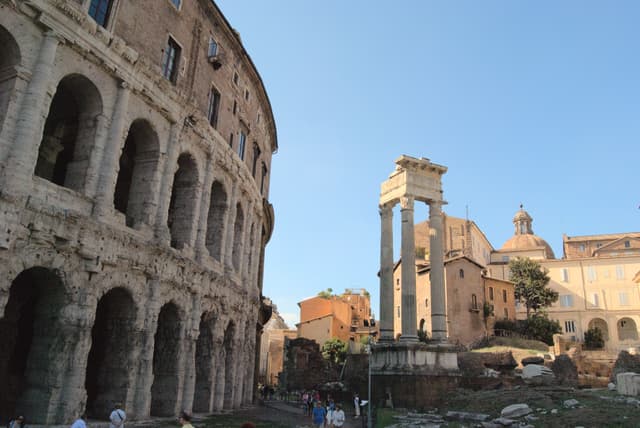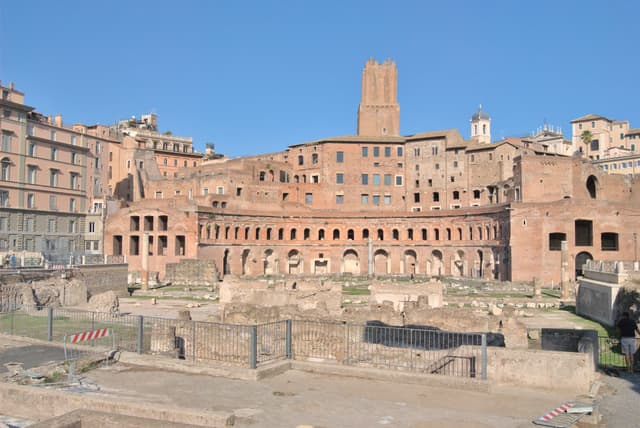Footsteps of Paul
Published: November 04, 2022
I spent the first half of October this year on a tour exploring Turkey, Greece, and Italy. It was an incredible opportunity to travel to parts of the world that played a big role in the New Testament. It was a journey through time from when Greek and Roman paganism was dominant and expected and the church was persecuted and continued to grow despite the persecution until the time when it became the state religion of the Roman Empire and adopted Roman bureaucracy and the post Christian Muslim areas in the east. It was great to be able to visit these places, walk the roads that the Apostles walked, see the places where they taught, and just get a feel for the places that I've read about.
Turkey
After a couple of days of travel, we arrived in Izmir, Turkey, where we started our journey. In Turkey, we would visit the seven churches that John wrote letters to in the Revelation: Ephesus, Smyrna, Pergamum, Thyatira, Sardis, Philadelphia, and Laodicea.
Day 1
We started the day with a short drive through an old neighborhood on a windy road that was barely wide enough for our bus to a fortress on top of Mt. Pagos. We spent some time up there exploring the ruins and enjoying the views of modern Izmir. After that we headed down the agora of ancient Smyrna, one of the seven churches that Jesus told John to write letters to in the Book of Revelation.
Our next stop was Bergama, a couple of hours north of Smyrna. We stopped for a good sit down lunch which included soup, kebabs, and baklava for dessert as well as some singing and dancing from the owner of the store. Then we headed over to ancient Pergamom, another of the churches in Revelation, where we took a gondola to the top of the acropolis. This is where I first started to get a sense of what this trip was going to teach me. The acropolis had a commanding position over the valley below all the way to the sea. It was crowded with temples to different pagan gods and a temple dedicated to the Roman emperor Trajan. Another of the temples, the Pergamom altar, is possibly the 'Seat of Satan' mentioned in the letter to the church in Pergamom. Walking around the ruins, I found myself wondering what it was like for the early Christians to live here.
That night we stayed at Kusadesi near ancient Ephesus. This might have been my favorite hotel. Dinner was on a deck overlooking the waterfront across the street where I went for a walk and got some ice cream later.
Day 2
We went to Ephesus the next day. Of all of the places on our agenda, Ephesus was one of the ones I was most looking forward to seeing. Here we strolled down the main street of the old city as Shebby told us about some of the highlights. It was incredible to be walking on the same streets as Paul. And the city was preserved well enough to make it pretty to easy to imagine it at its heyday. The crowds of cruise tourists added to the feel of Ephesus as a bustling city. It was fun to think about the apostle Paul going about his business in a city where he spent three years teaching the Word. The climax of this stop was the Grand Theater of Ephesus, which was the site of the end of a riot against Paul in Acts chapter 19.
From Ephesus, we had a long drive away from the coast to Laodicea, another of the cities that John wrote to. Laodicea was a bit of surprise for me, I guess because I didn't have any expectations about it before the trip. It was a pretty typical Roman city, with the main street through town, an agora, and a theater which hasn't been excavated yet. There was also a pretty big church building dating to the 4th Century, centuries after the church here was called to repentance in the Book of Revelation. Laodicea was a major city in the area at this time until the 7th century and in addition to the large church building had a Bishop's residence.
Before we went to our hotel for the night, we made quick stop at Colosae, which is totally unexcavated, and climbed up the tel, or hill that is formed by generations of cities built on ruins.
Day 3
Day three started with a visit to Heiropolis and ancient city built above geothermal terraces. It was another typical Roman city and entered on the main road again. Our first stop here was another theater. This one was in good condition and had a restored stage building that all of the other theaters we visited lacked. After the theater, some of us headed up a hill above town to the place where the apostle Phillip was martyred and later buried. There's a couple of ancient Christian churches built at the site: one that might have been built over his tomb and an earlier Byzantine church built on the site of his martyrdom. I really appreciated the church history here and being able to take some time to pray for the persecuted church.
The rest of the stay in Heiropolis was pretty laid back. I wandered through part of a museum that had some Roman sarcophagi and other smaller artifacts. Then I walked out on the terraces a bit and got some ice cream before heading back to the bus.
After Heiropolis we set out on a long drive north to Bursa. On our way stopped by the last three churches of Revelation: Philadelphia, Sardis, and Thyatira. There's not much left of Philadelphia. Just four massive pillars of a church and some chunks of building sitting in a park in the middle of a residential area. Sardis was more substantial and had a large synagogue and a partially reconstructed gymnasium along with the usual ruins of shops. We finished with Thyatira, which like Philadelphia, doesn't have much left. Just parts of a building sitting in a square in the middle of a modern city.
Philadelphia
Sardis
Thyatira
Day 4
After spending the night in Bursa, we started heading north towards Istanbul. We stopped at Nicea on the way to visit the site of the Council of Nicea or at least as close as we could, since the church they met in has since fallen into Lake Inik. This is where bishops discussed the nature of Jesus, eventually deciding that he is God, and wrote the Nicene Creed to codify some basic doctrine. There were also some other sites like an ancient city wall and a church that has been converted into a mosque.
After Nicea we finally arrived at Istanbul, our last stop in Turkey. Once we crossed the Gulf of Izmit, we started getting into the outskirts with modern shopping malls and Ikeas. Soon we in the city itself, surrounded by sprawling neighborhoods filled with apartment buildings and dotted with mosques. It's a huge city and it took a while to get around, but eventually, after crossing over the Bosporus and a bay called the Golden Horn and passing by ruins of a Byzantine palace, we arrived at the city center. We walked by the Hagia Sophia, but the line was too long to get inside, so we went to the Basilica Cistern. This was a massive underground water cistern that was supported by dozens of columns, each with a unique design. In modern times, it's kept mostly empty so people can visit and there are some nice colored lights.
After the cistern, Shebby took us over to the Grand Bazaar and let us go for a couple of hours of shopping. This was a really fun experience. It was a little overwhelming at first and I was worried about getting lost, but I started to get my bearings eventually. I didn't have a real shopping list, so I was mostly just looking for things that caught my eye. After a while a young man got my attention and said he wanted to practice his English with me. At this point I knew he was going to try to sell me something, but I decided to go along with it for a while. This guy took me to a shop off one of the roads, where he introduced me to another guy, who then introduced me to his father. They took me to the upstairs of their rug shop, sat me down, and brought me a cup of apple tea. This is when the father started to show me their small rugs, small enough to fit in my luggage. One of these did catch my eye, and after chatting a bit and negotiating a price, I left with a beautiful rug and a good story.
Day 5
Our second day in Istanbul started with a tour of the Hagia Sophia. Originally built as a Christian church by Justinian the Great, it was converted into a mosque after the Ottomans, then to a museum when Turkey became a republic after the fall of the Ottoman Empire. It was recently converted back into a mosque under President Erdoğan. They still allow tourists inside, but since it's a mosque the women had to wear head coverings and all of us had to take our shoes off. It was an interesting look at church history and an impressive building in general.
After the Hagia Sophia, we went to the Archeological Museum. Unfortunately, the section covering Biblical history was closed for renovations, but we did get to see some other interesting exhibits, including one about the ancient city of Troy that is well known from the Greek epic The Illiad. Archeologists had dismissed Troy as mythological until it was discovered in the 19th century. They actually layers of ancient cities at the site as many incarnations of Troy were destroyed by war and disaster and then rebuilt.
Following the museum, we took a long walk through the city to our last lunch in Istanbul, pausing briefly outside Shebby's favorite Turkish Delight store. We were allowed to look in the windows, but because we had to eat lunch and then catch a flight to Athens we couldn't actually shop there.
I was a little sad to leave Turkey and Istanbul after this. Istanbul is a beautiful and colorful and lively city and it's located in a beautiful country. This is definitely a place I'd come back to for vacation sometime if I get the opportunity.
Greece
Day 6 - Delphi
On our first day in Greece, our group split up. Most people went on a cruise to a few islands near Athens. That sounded really fun, but I came on this trip to experience history, so I went the smaller group to Delphi. This was the place where priestesses, high on drugs and volcanic fumes and open to demonic influence, would prophesy once a month to people who traveled there to get advice. Getting there was a pretty scenic drive too. After getting out of Athens, we passed through some hills and farmland and the site of the Battle of Marathon that was fought when the Persians invaded Greece. I had never really thought about where Delphi was located before, but I learned on this trip that it's actually up in the mountains and we passed through a beautiful ski town on the way there. Delphi itself is located on the side of a mountain and we followed a switch backed path up the ruins as we toured them. After touring the ruins, we walked through the museum where we got in trouble for posing in front of a pair of statues and saw an inscription that mentioned Gallio, a Roman governor of Achaia, who played a part in the book of Acts. It was a really visit and it turned out to be a much shorter day than our days in Turkey. A group of us ended the day hanging out at the rooftop bar of our hotel where we had a perfect view of the Parthenon.
Day 7 - Athens
On our second day in Greece we stayed in Athens.
- Acropolis at Athens
- Imposing hilltop with sheer cliffs
- Crowded with temples
- Sermon near Mars Hill (the closest spot with seating in the shade)
Day 8 - Corinth
- Corinth
- These Roman cities are starting to feel very familiar. Has all of the basics we find in any city.
- Bema seat where Paul was judged
- Erastus Inscription - more physical evidence of a guy mentioned in the Bible
- Conclusion
- Boat ride
- A lot like Paul's trip, without the shipwreck
Italy
Day 9
We started our trip in Italy at the Port of Bari on the eastern coast, where we met our new guide, Daniel, and our tour bus. From there we had a long but scenic drive across the peninsula to Pompeii. I've always known that Pompeii was very well preserved after being buried by a pyroclastic flow when Mount Vesuvius erupted, but after walking through crumbling old ruins for a week and half in Turkey and Greece, this city was almost unreal. It was an astounding look at the ancient Roman way of life.
Day 10
Day two in Italy started with one of the most beautiful sunrises I've ever seen. Our first stop was at Puteoli, now Pozzuoli, the port city where Paul arrived in Italy. Like a lot of old ports, the coastline here shifted leaving the ancient port mostly dry. Most of the archeology here was the town square, which had a market building that was mistaken for a temple when the site was first excavated. We walked a loop through part of Pozzuoli to see the bay and got to experience a little bit of the modern town. From there, we headed to Naples to see the archeological museum that has a lot of artifacts from Pompeii, including a lot of very well preserved mosaics. After the musuem we headed north taking the more scenic route that roughly parallels the ancient Via Appia, or Appian Way, which used to be the main road from southern Italy to Rome. We stopped at the town of Minterna, a town on the Appian way, and saw an almost perfectly preserved section of the original road. Our day ended at a rustic inn south of Rome where we had a big dinner with dishes inspired by ancient recipes.
Day 11
After a week an half of traveling with almost perfect weather, we woke up to a steady rain. I enjoy the rain, so it was a nice change of pace to me. I think the area we were in and the inn itself were actually really nice in the rain and our day started with a long bus ride, so we didn't have to get wet in the morning. Our site of the day was the Catacombs out Rome, where I wasn't able to take pictures. This was an interesting place to me because I had such a large misconception about the history of the Catacombs. I had always thought that the Catacombs were where the early persecuted church took refuge and buried believers. It turns out though, that the Catacombs were used during that period. They were well known to the Romans, being old quarries just outside the city, so they wouldn't have been good hiding places. They were actually just Christian cemeteries and the sarcophagi that we saw were dated to the late 4th century and later, after Christianity had been legalized.
After the Catacombs, we made our triumphal entry into Rome and took a tour of the Colosseum and the Roman Forum. It was a really interesting look at Roman history.
Day 12
Our second day in Rome was a day of churches. We visited three churches that day, starting with St. Peter's Basilica, then going to Tre Fontane, and finishing our tour that day with St. Paul's Basilica. After we got back to the hotel, I walked over to St. John's Basilica.
St. Peter's Basilica is one of the sites in Rome that's on most people must see list. The current building was built in the 15th century, but it replaced an older church. They were both built on the traditional site of Peter the Apostle's burial. It was an interesting contrast from the pagan cities we had visited in Turkey, Greece, and even southern Italy. In those places, I imagined what it would have been like for the early to church to live under persecution in those days. Now, here at St. Peter's Basilica we saw the Catholic Church at it's peak, when it was the supreme authority in western Europe. It is a beautiful building too. It's filled with very rich artwork, which would have been useful for teaching people Bible stories and church history when most people weren't literate.
After this, we went across town to Tre Fontane, the traditional site of Paul the Apostle's martyrdom. It's said that when he was beheaded, his head bounced and water sprung from each spot that it hit, creating the three fountains the church is named after. It's a much smaller, more low key area. The bus dropped us off on a busy road and we walked down a long tree lined driveway, leaving behind bustle of the city. It was a really peaceful area and after visiting the church we had lunch at a small cafe there (and probably bought all of their sandwiches).
Our next stop was St. Paul's Basilica, a large church built on the site of Paul's burial. This was another beautiful church and some of us on the tour actually thought it was nicer than St. Peter's. That might have been partly because there were a lot fewer people here so it was a lot more peaceful.
Our last official stop of the day was what archeologists think was the apartment where Paul was held in house arrest. To get there, we had to descend several stories below the ground, passing through multiple generations of city.
After we got back to the hotel, I still had some energy, so I mad the short walk to the Basilica di San Giovanni, dedicated to both John the Baptist and John the Evangelist, the one apostle who wasn't martyred. This was a fun, interesting visit, and I was able to take my time and really appreciate all of the details of the church. The main part was lined with statues of the apostles, each depicted with the implement of their martyrdom (except for John of course), and above those were paintings of some of the prophets. Because it was later in the day, there were also one of two services going on in some of the side chapels.
Day 13
This was the last day of our trip. We spent this last day in Rome again. Our first stop was the Vatican Museum. This was an interesting museum and in some ways felt more like a private art collection. We passed through a bunch of rooms packed full different statues, halls lined with tapestries, and a lot of other pieces of art. The highlight was the ceiling of the Sistine Chapel, which we weren't allowed to take pictures of. It was a lot smaller than I had pictured it being, but no less spectacular. It tells the entire story of the Bible in a series of frescoes from creation to the last judgement. We took some here time to quietly appreciate it before moving on.
After the museum we went on a walking tour of the city center of Rome, taking narrow winding streets where that were shared by pedestrians and cars. We stopped for lunch at Trevi Fountain, which I totally forgot to take pictures of. I was more concerned with finding some good pizza. After lunch we went over to the Pantheon, on the way going down the Spanish Steps, named for a Spanish embassy that used to be at the top. The Pantheon was one of the things I was looking forward to in Rome. It still has the world's biggest reinforced concrete dome, which I thought would be an impressive site. I didn't realize though that it has been used as a Catholic church since just after the fall of the Western Roman Empire, so I was surprised at how well preserved it is. It was also interesting that two of modern Italy's kings were buried there: Victor Emmanuel II, first king of modern unified Italy, and his son Umberto I.
Our tour for the day ended at a square not too far away. From there, we had the option of doing our own thing and making our own way back to the hotel. I finished off my time in Rome by wandering back to the hotel on my own enjoying the smaller sights of the city and one more cone of gelato.
Conclusion
This was a very long two weeks of travel in Turkey, Greece, and Italy. I was exhausted by the end of it and ready to go home. It was well worth it though. After spending time in these areas I have a much better feel for it it was like in Biblical times that will help me to read the Bible for the rest of my life.
